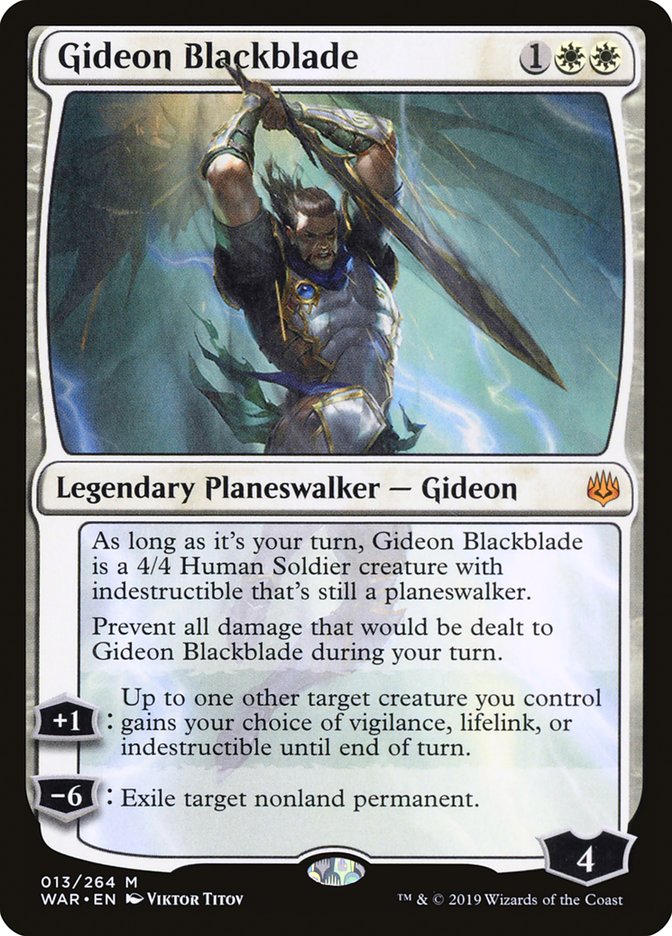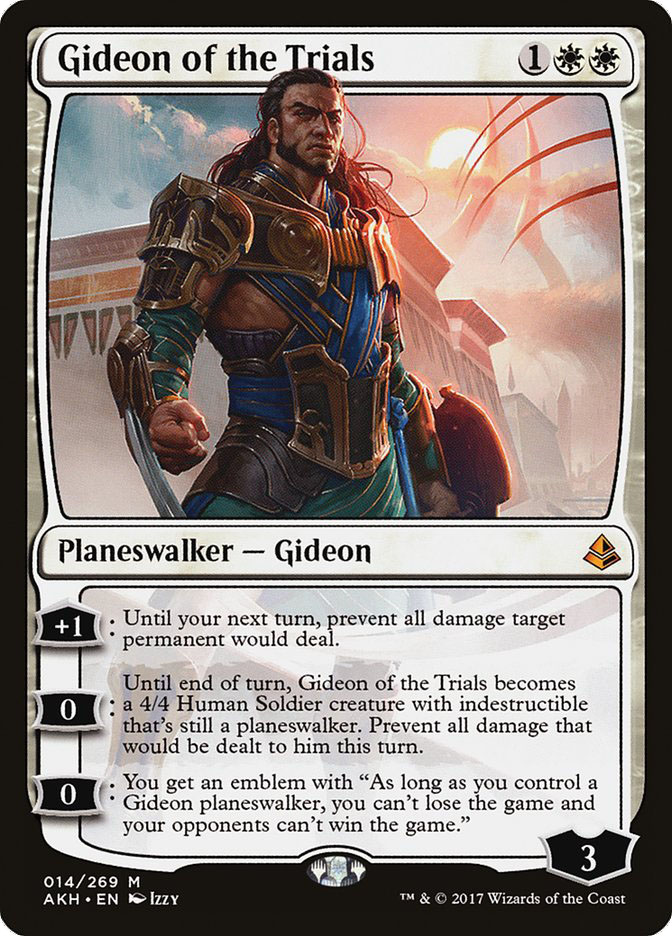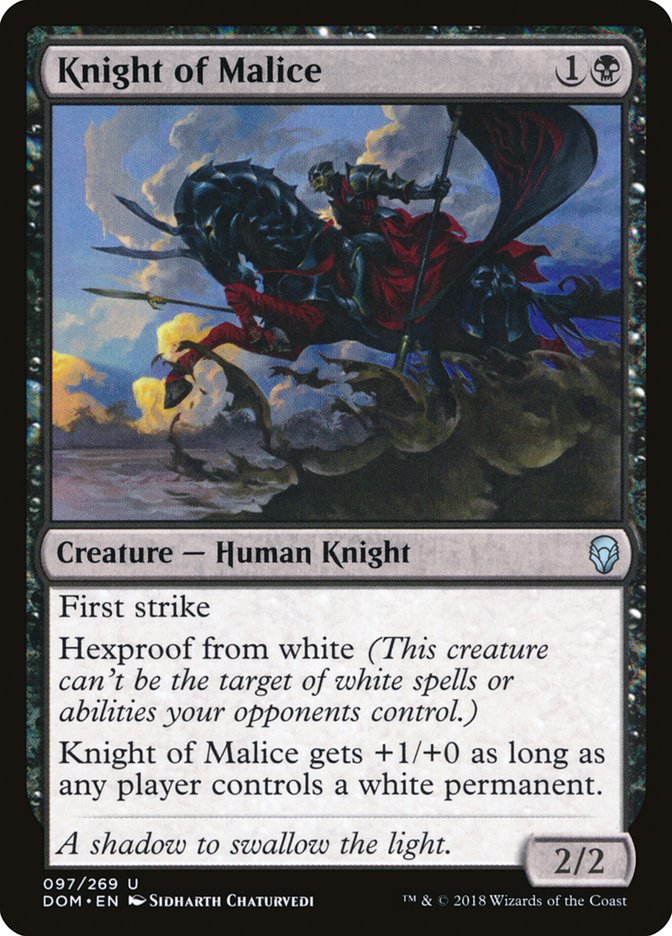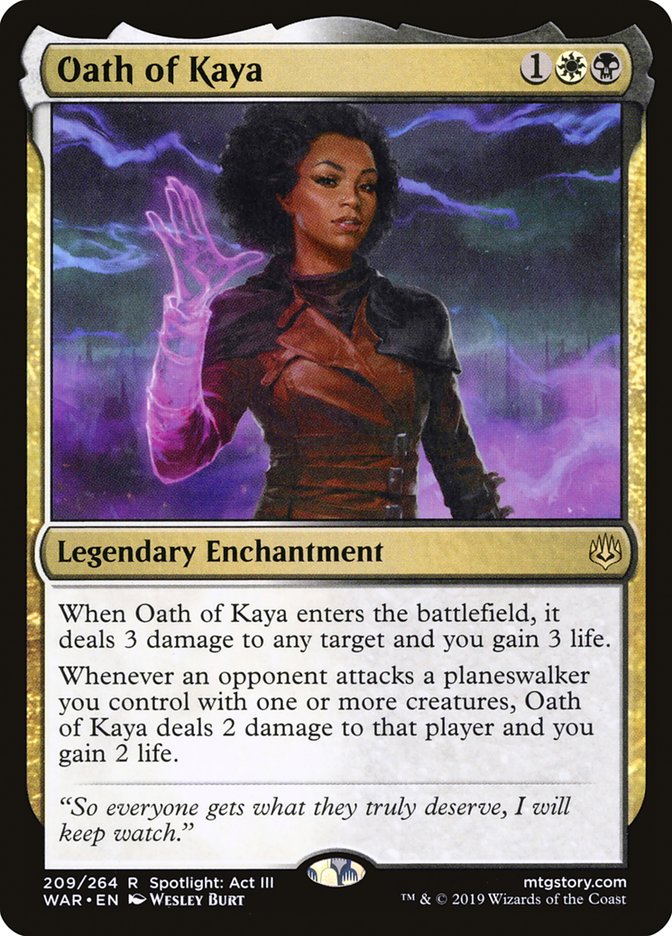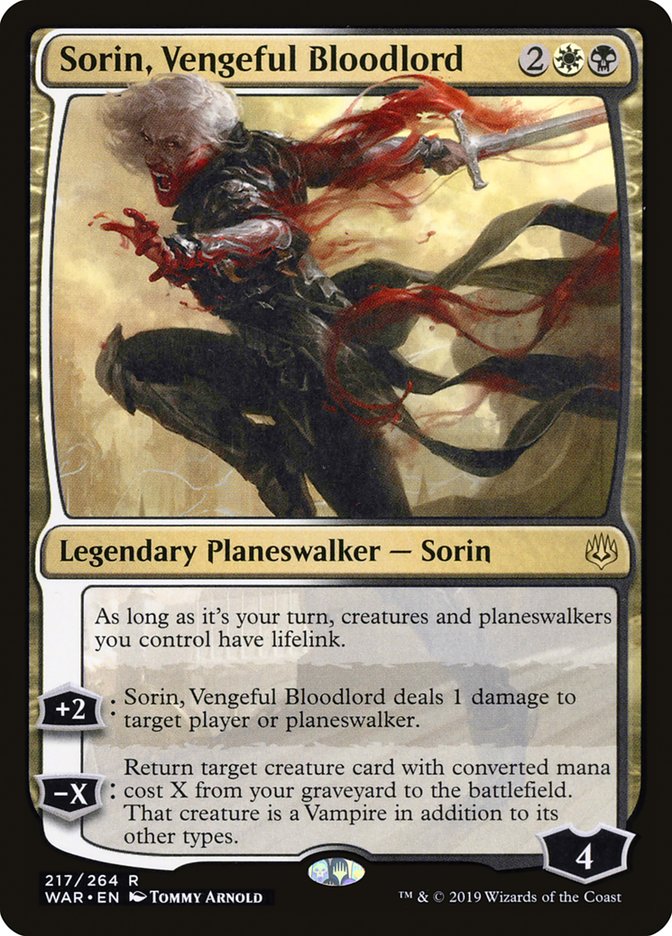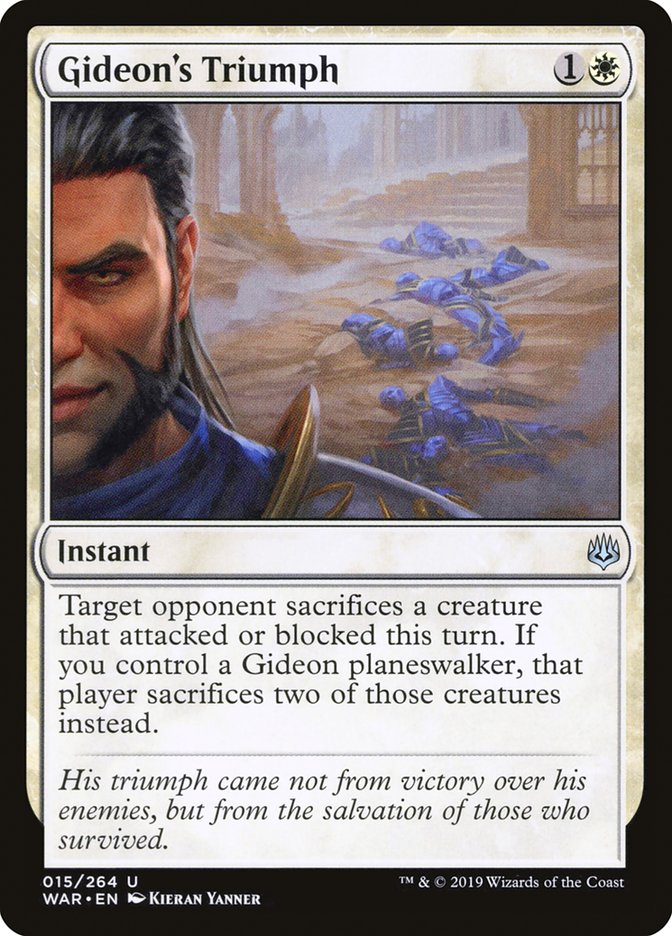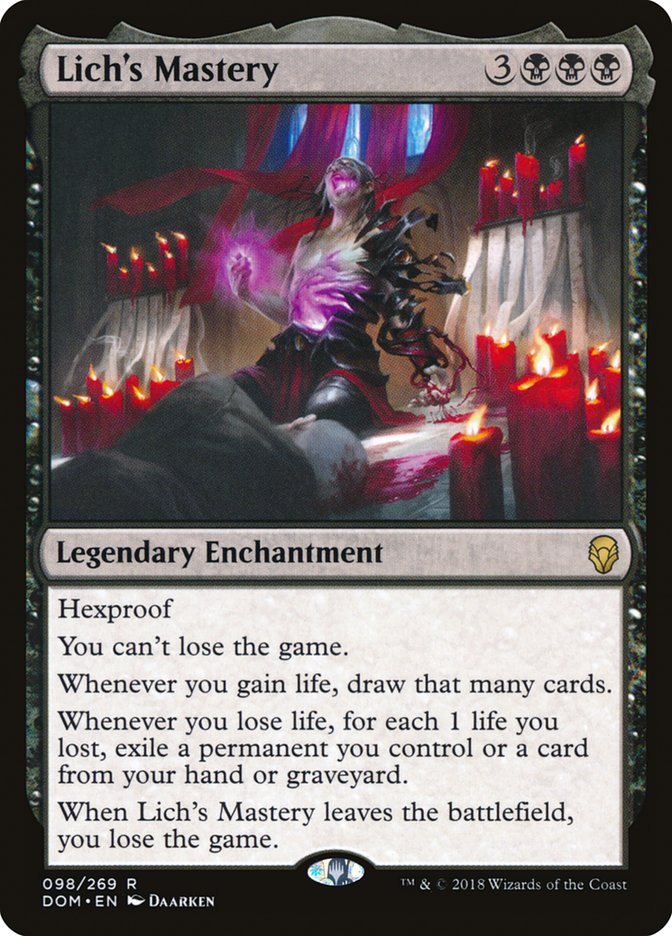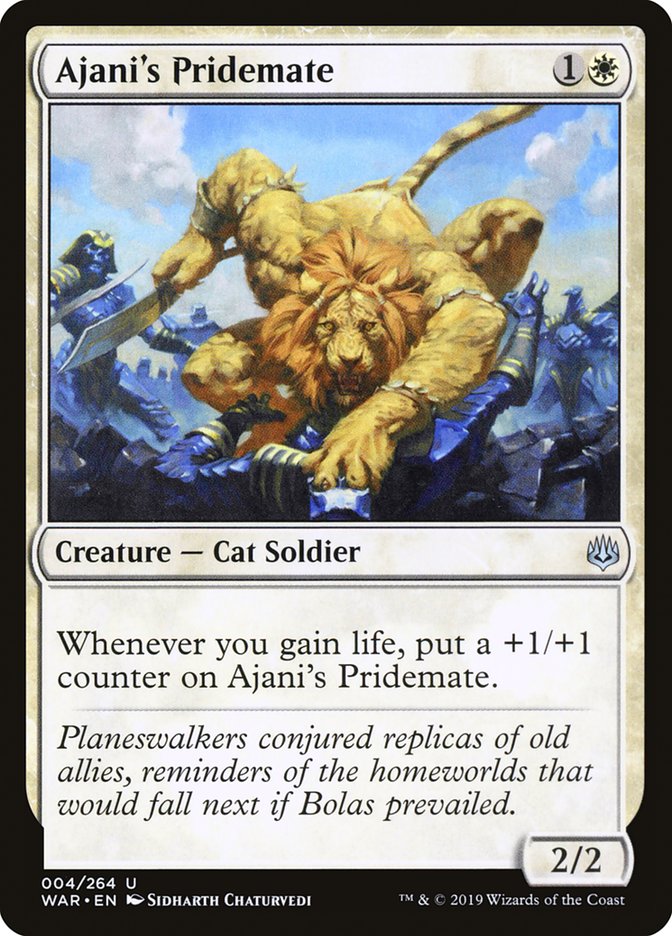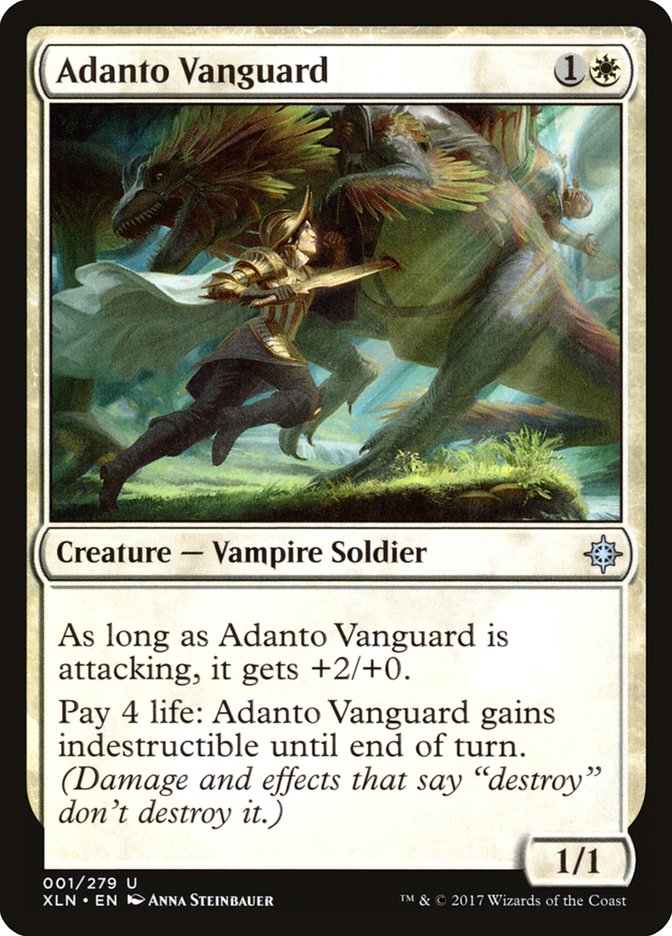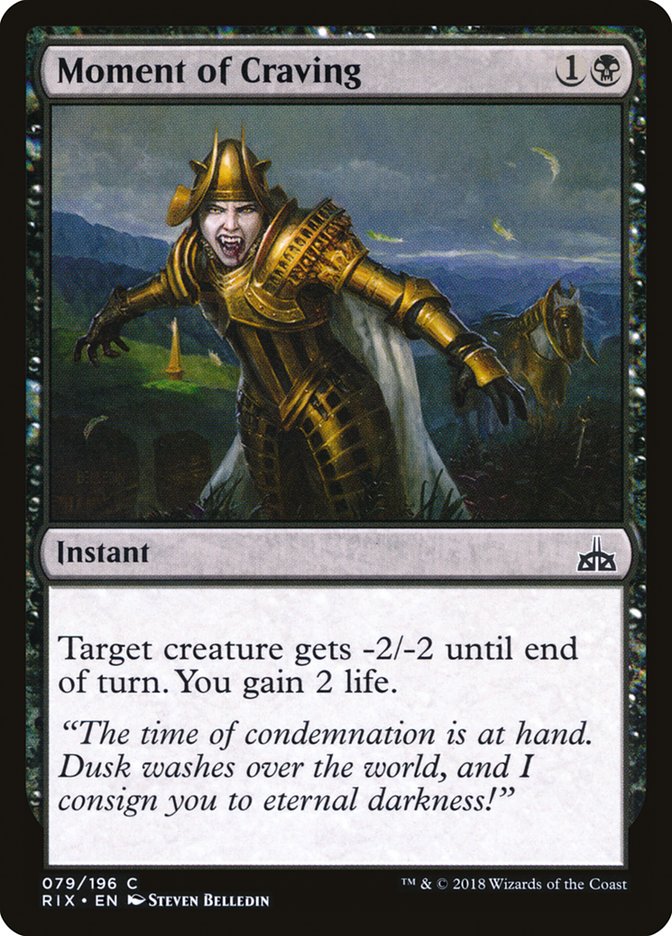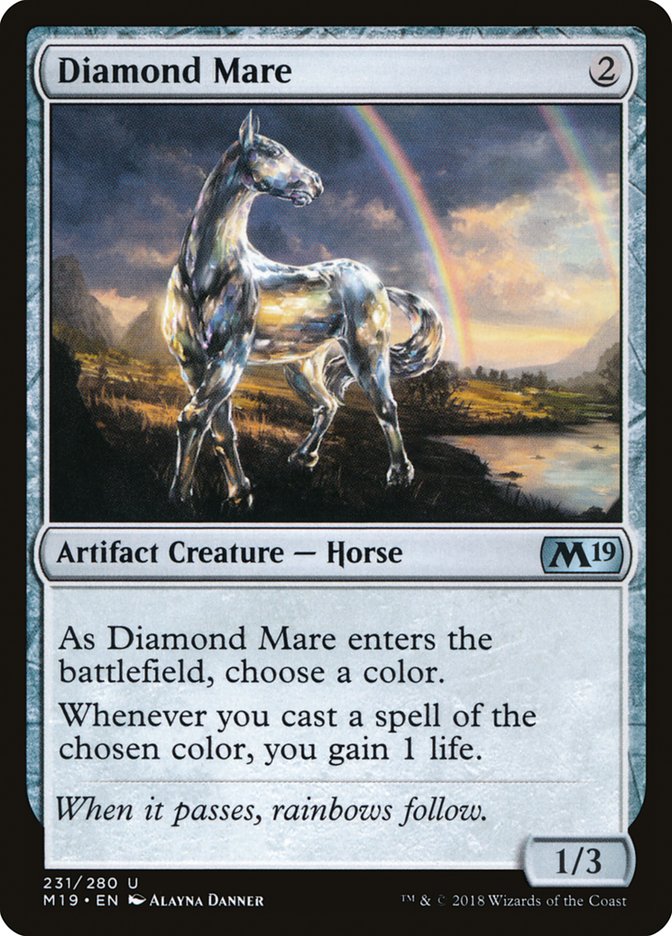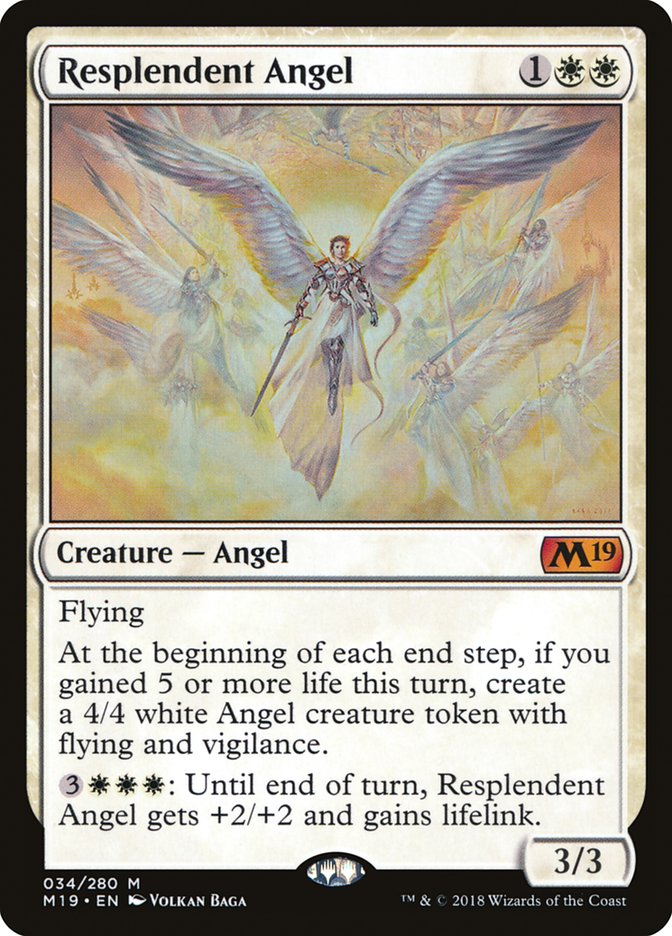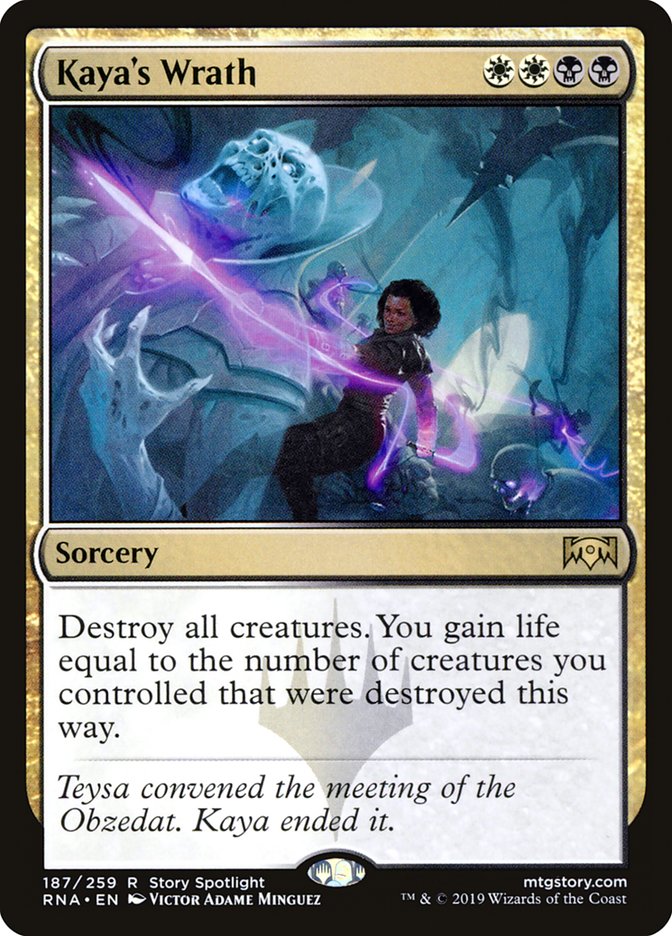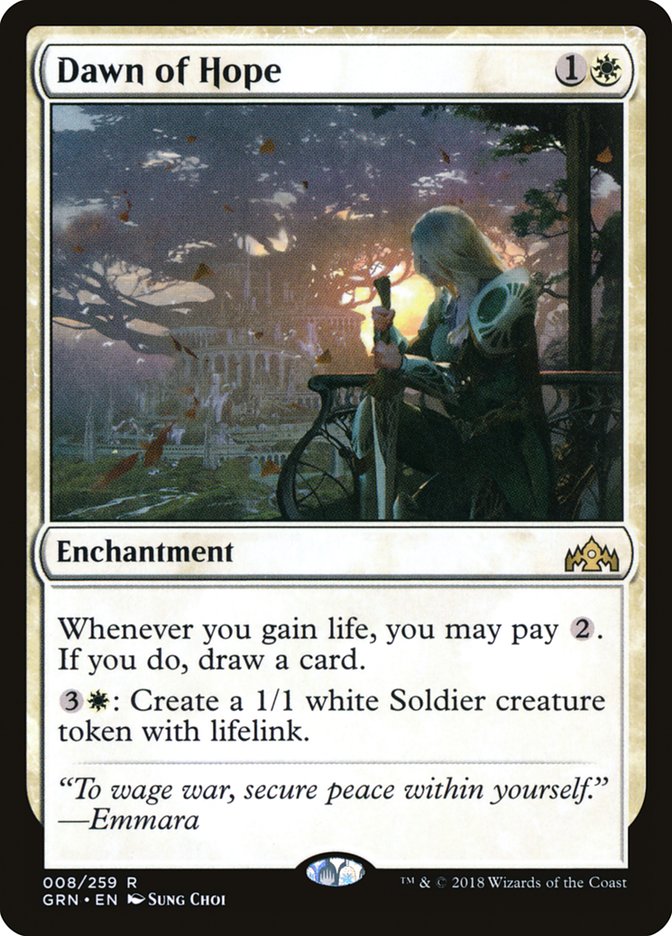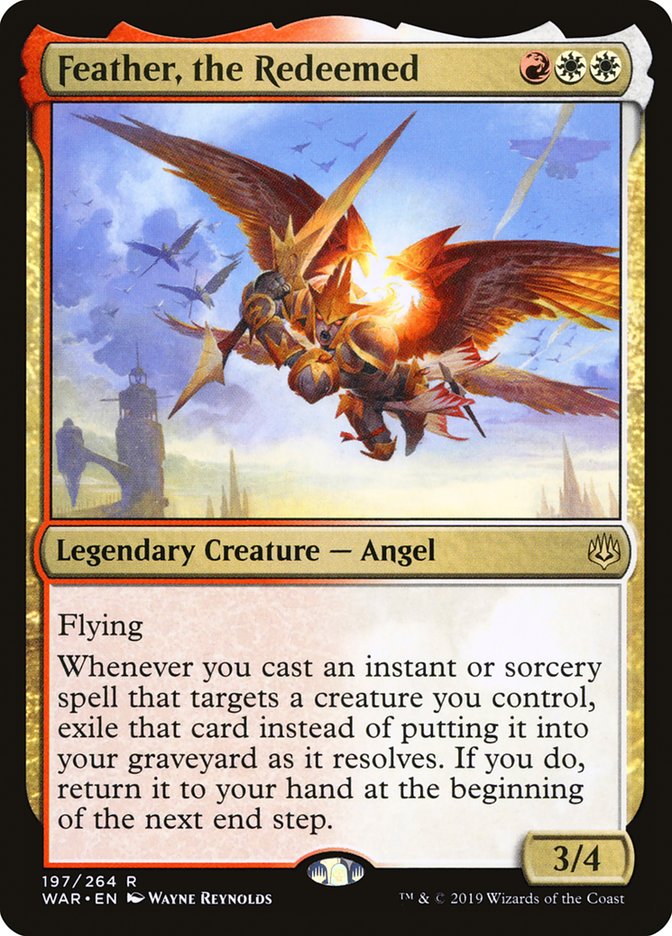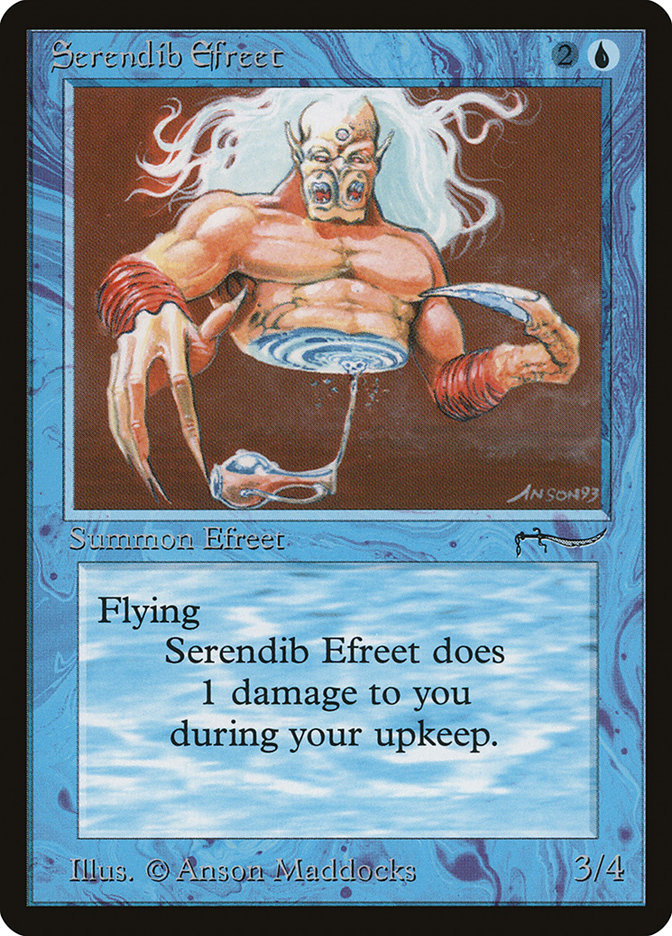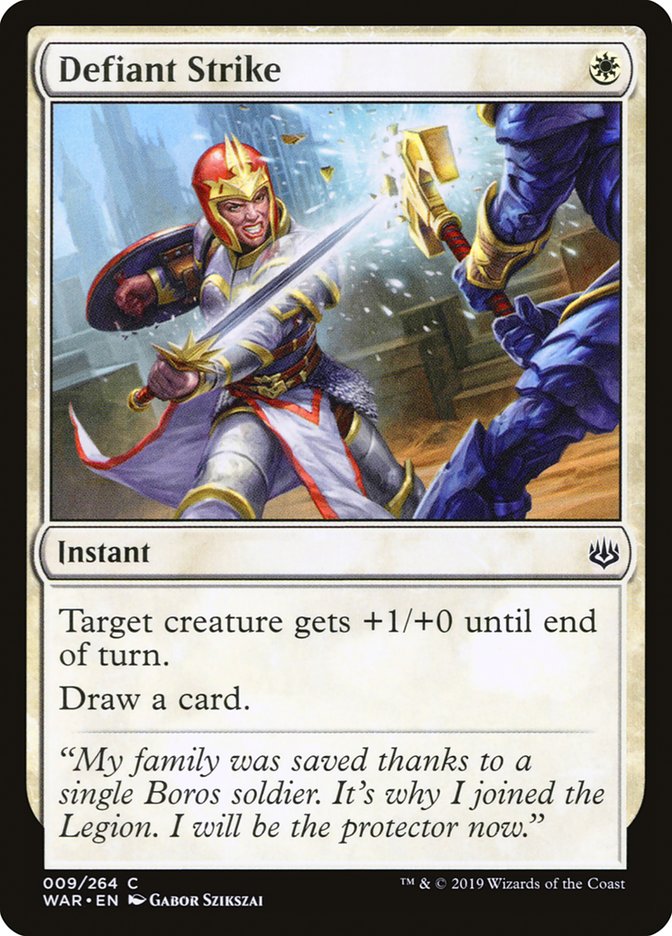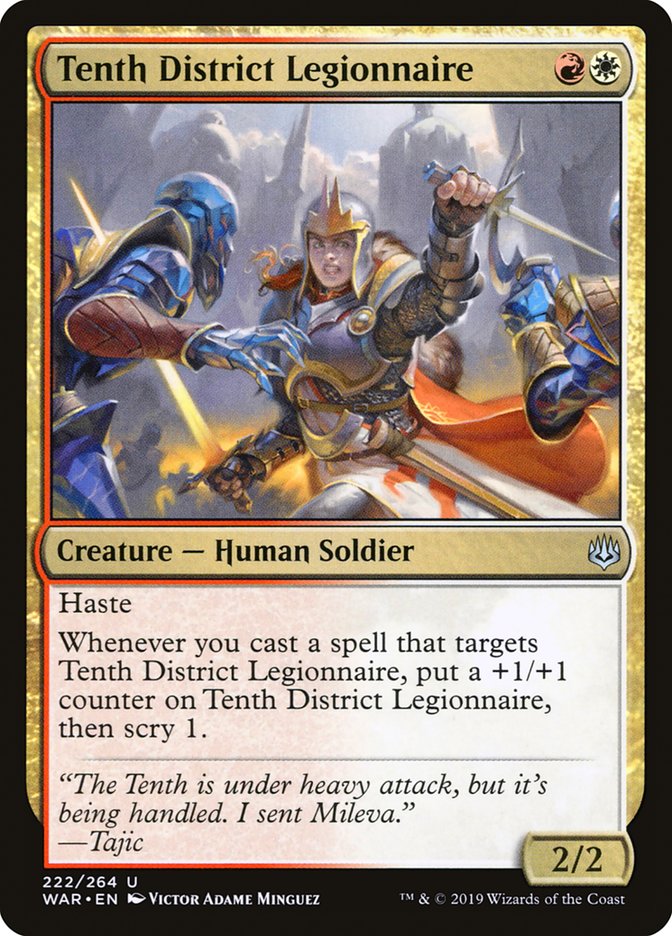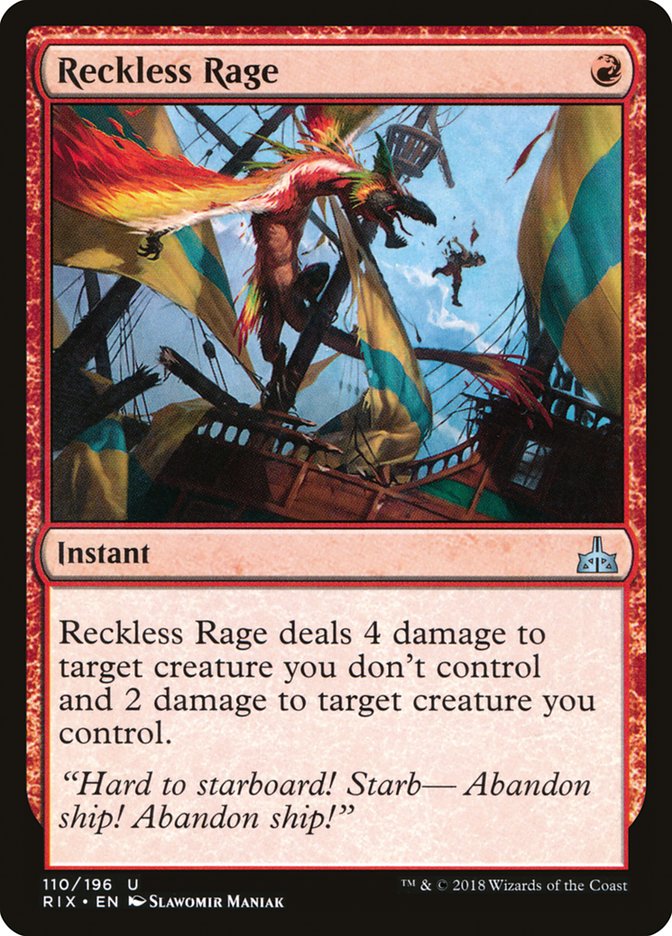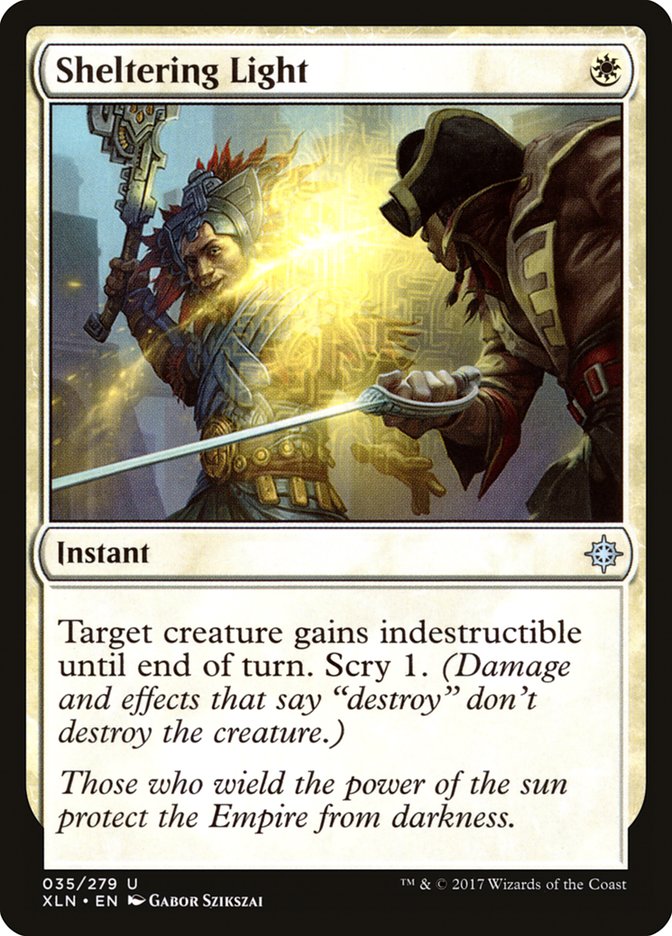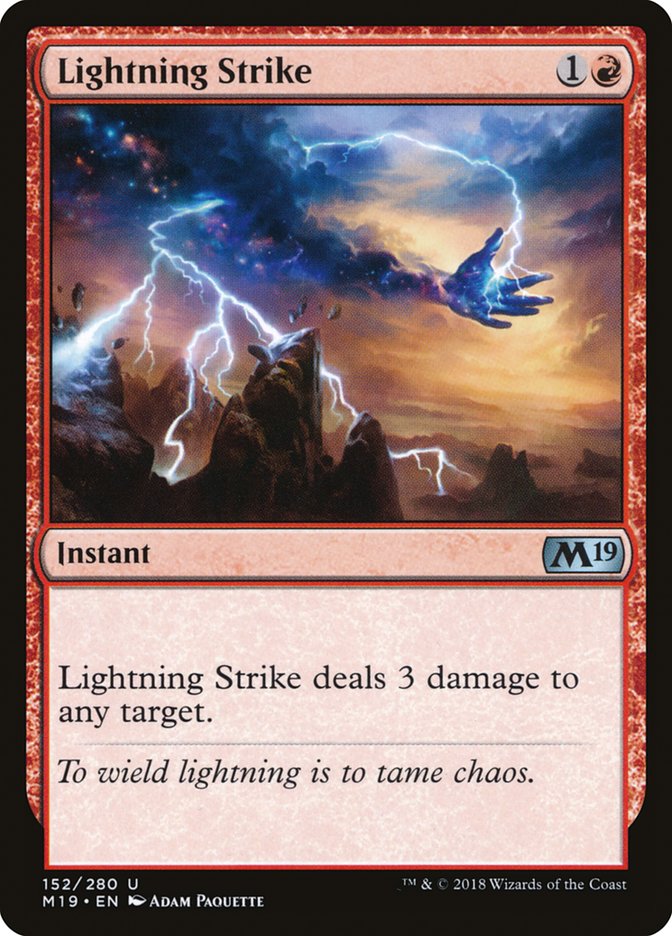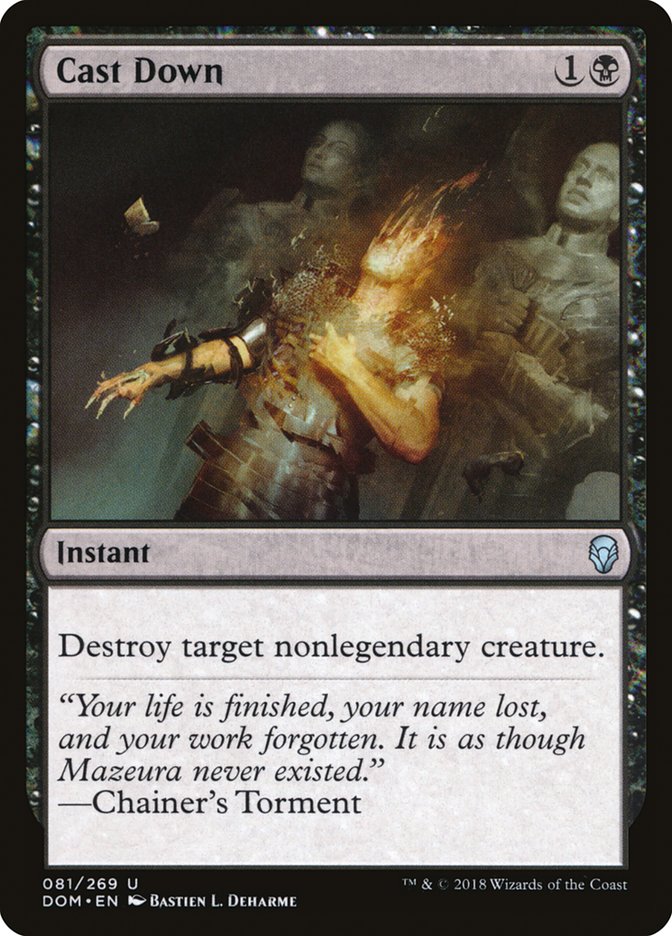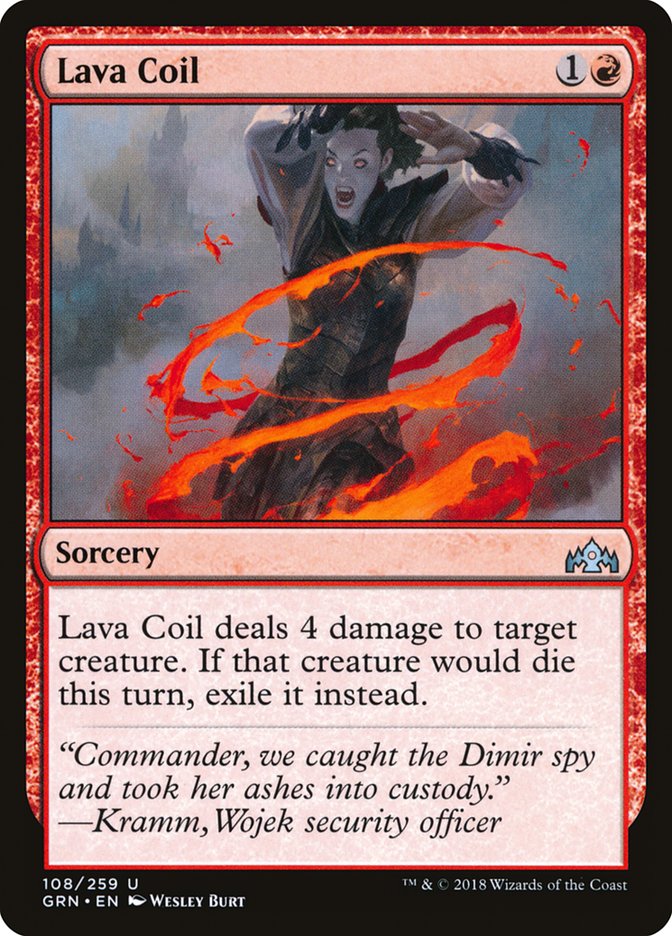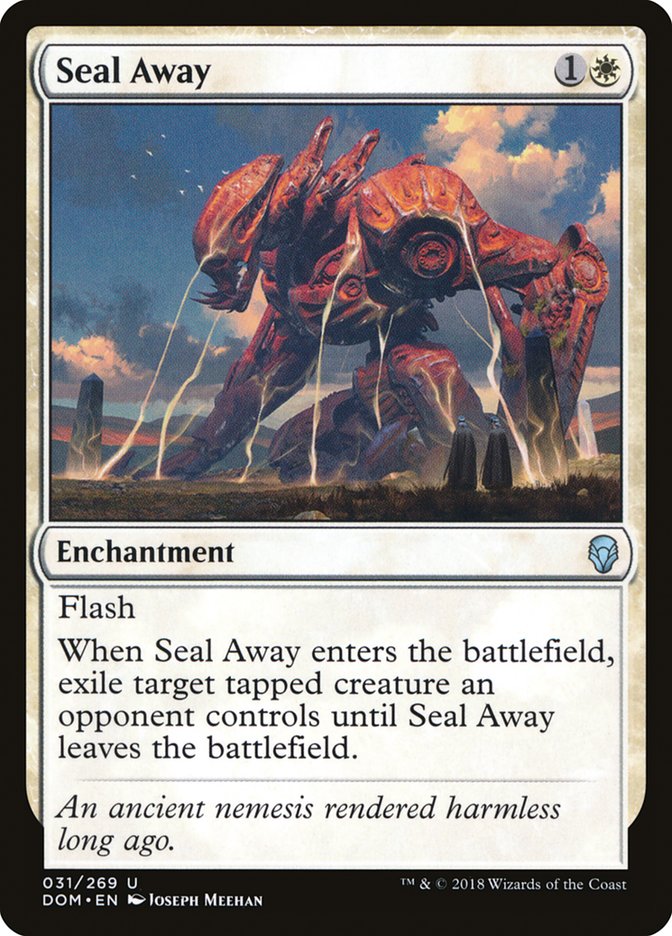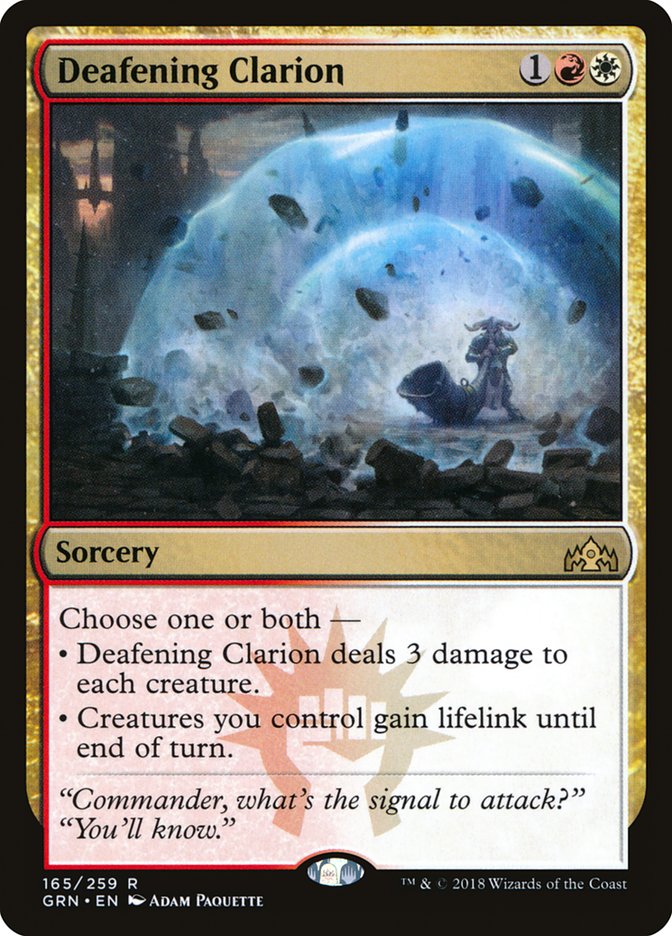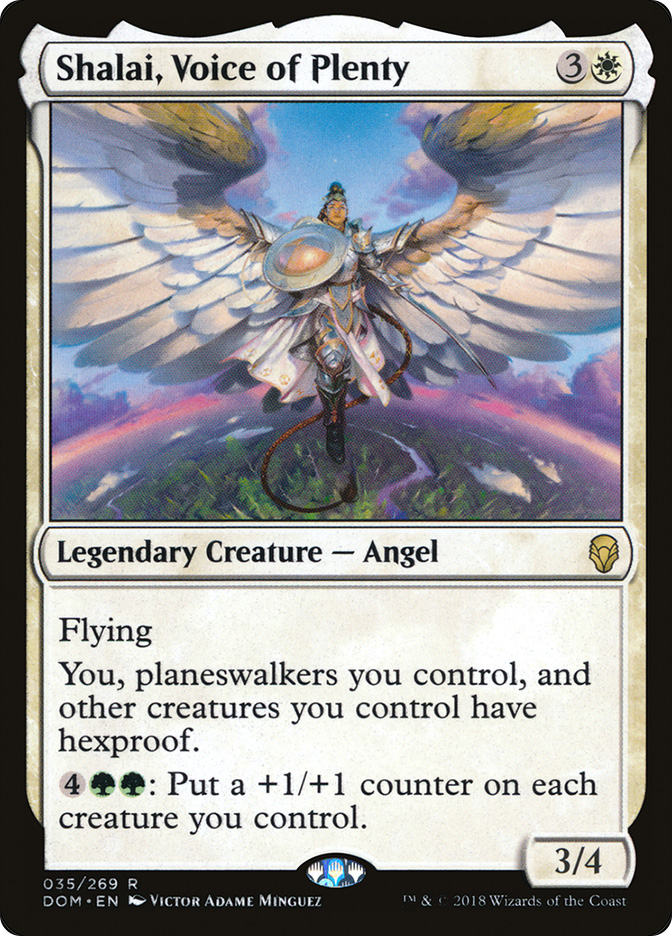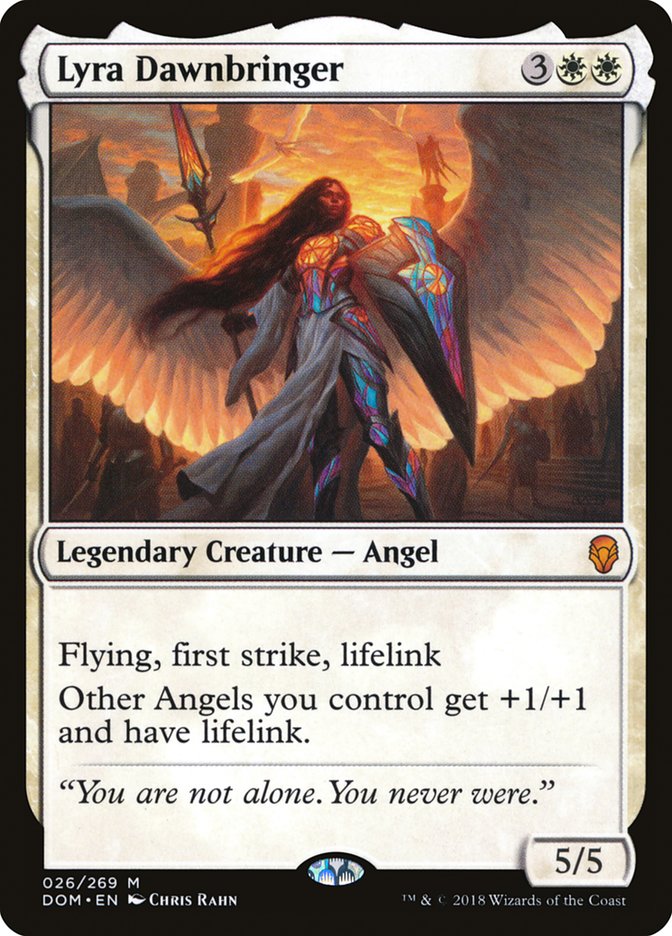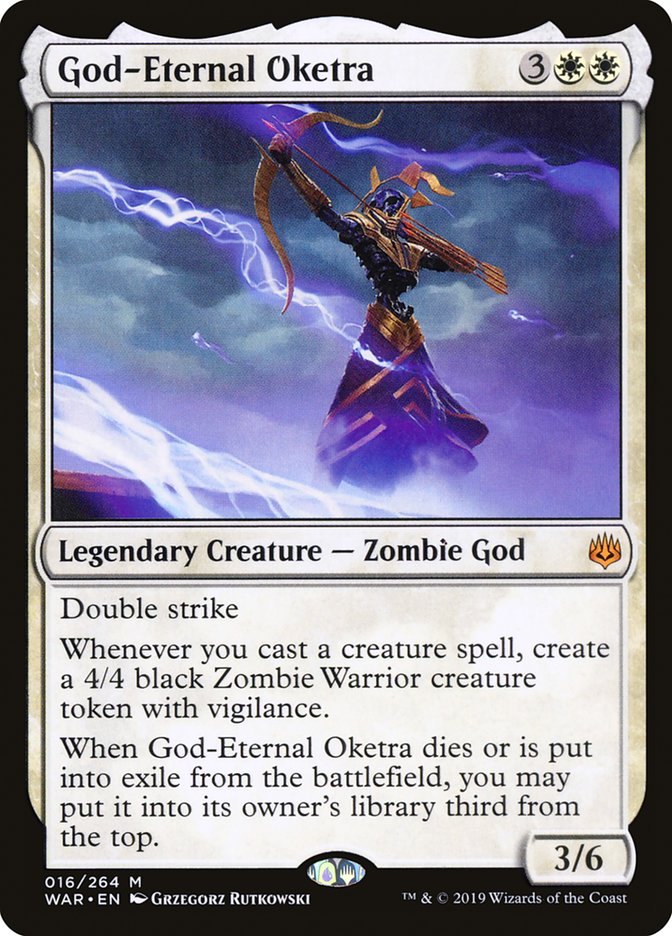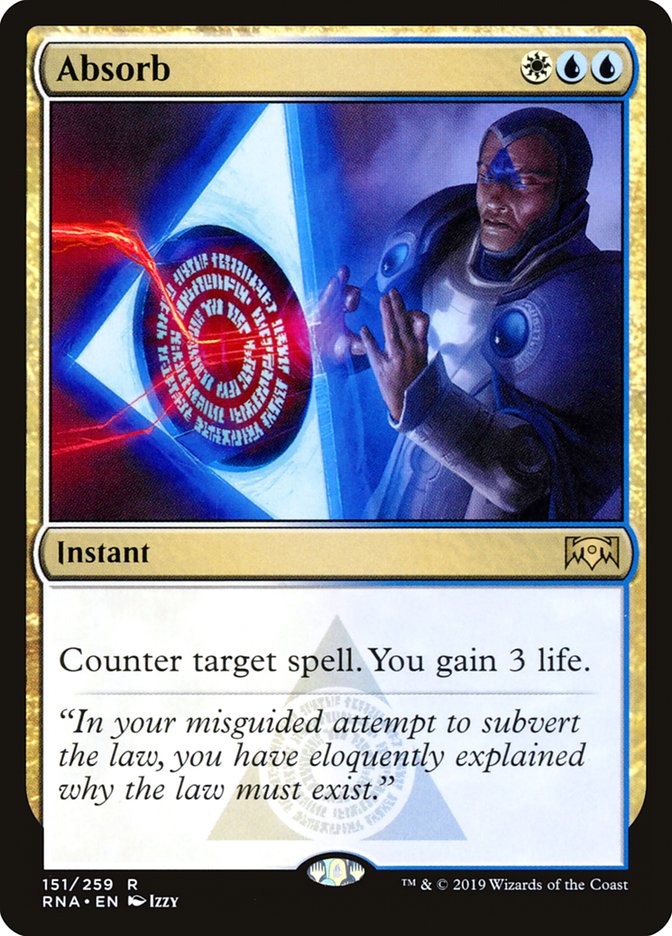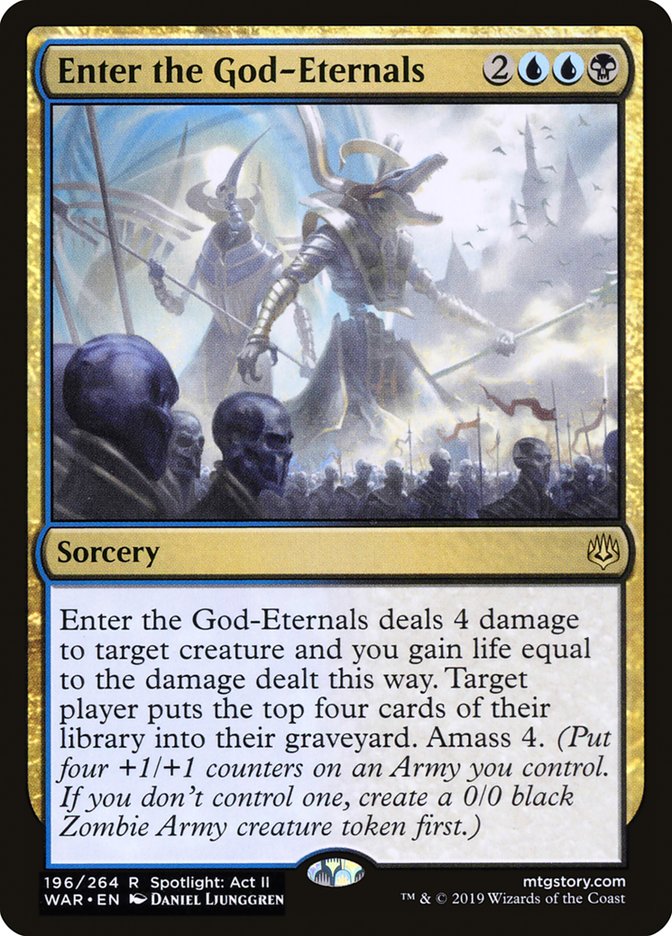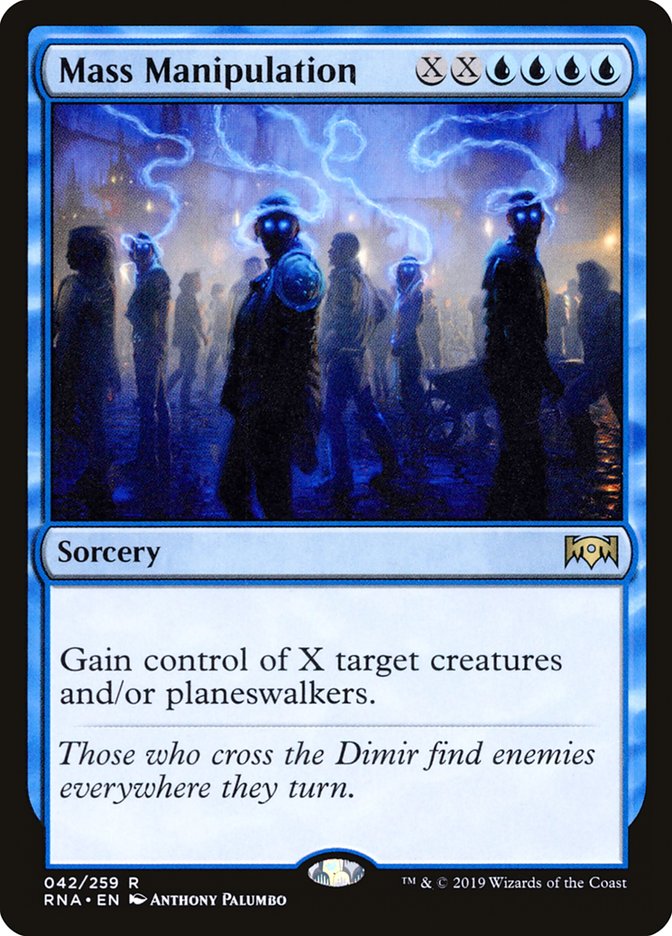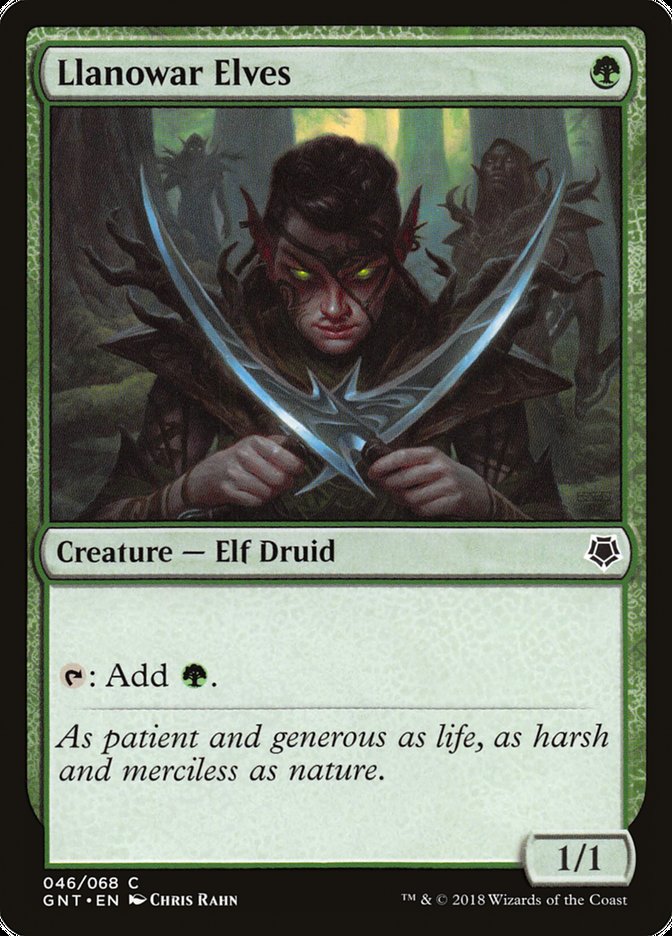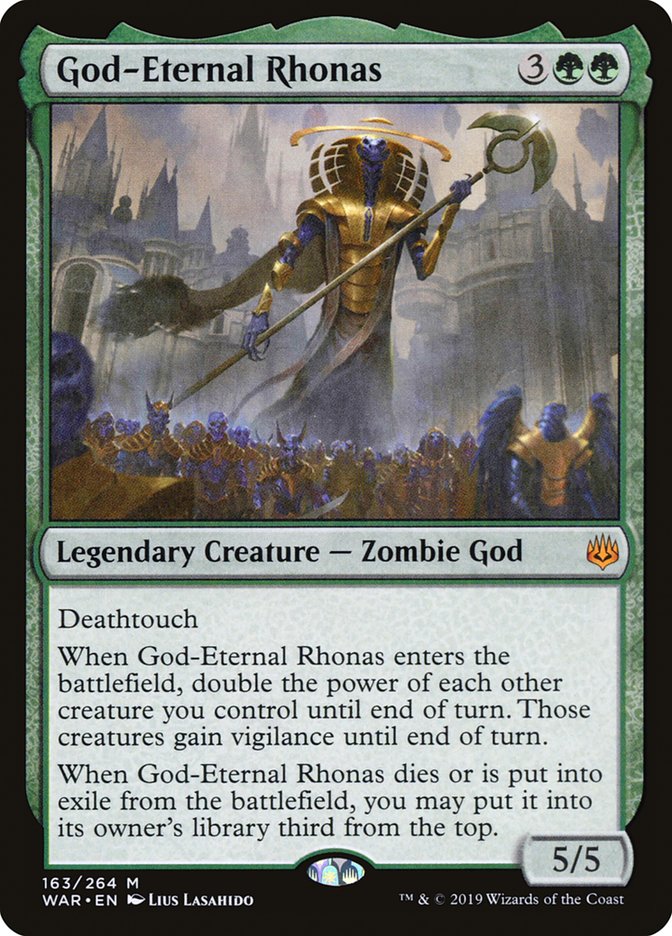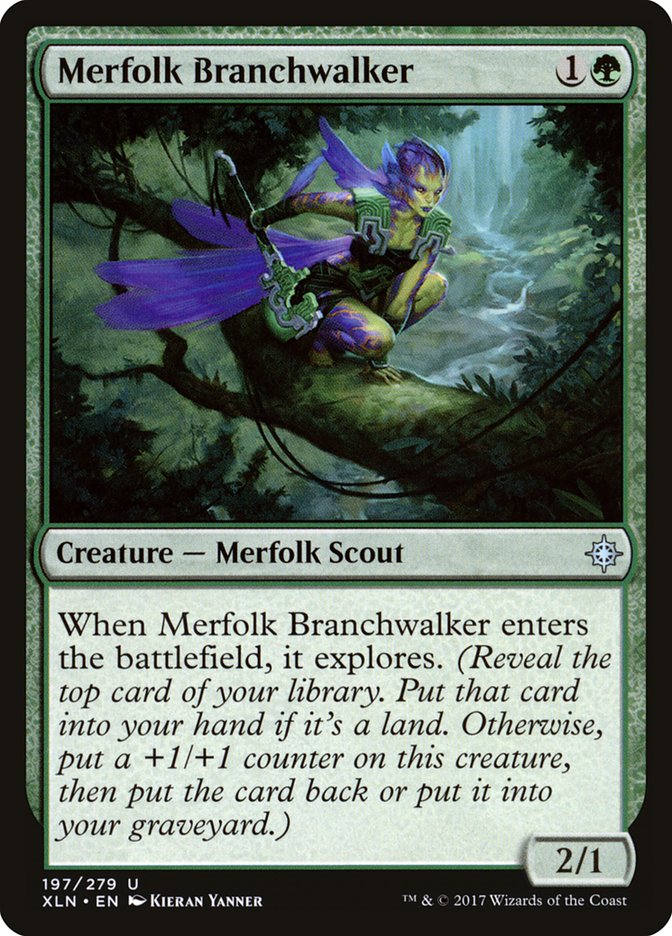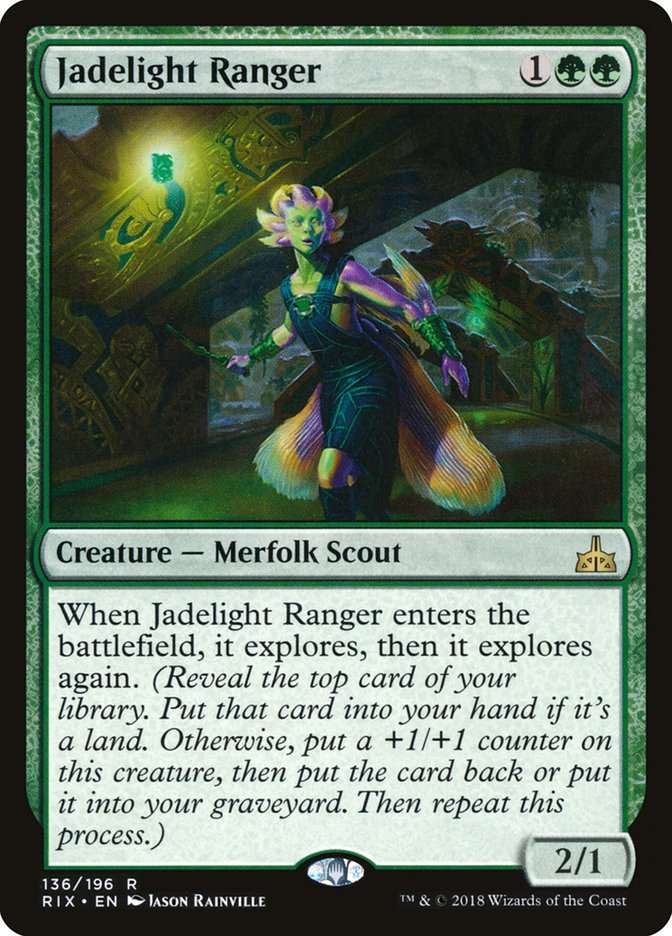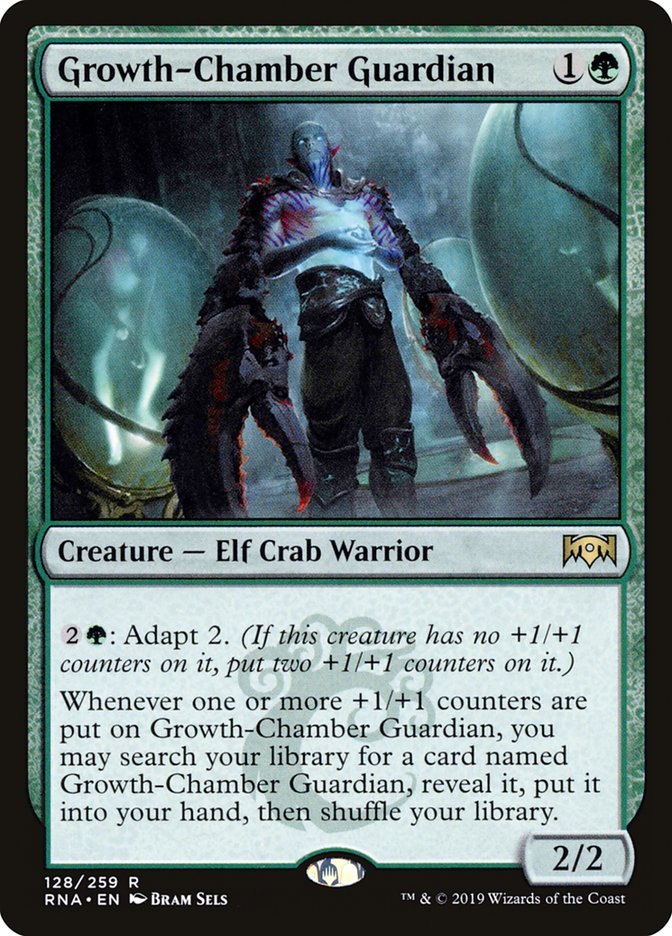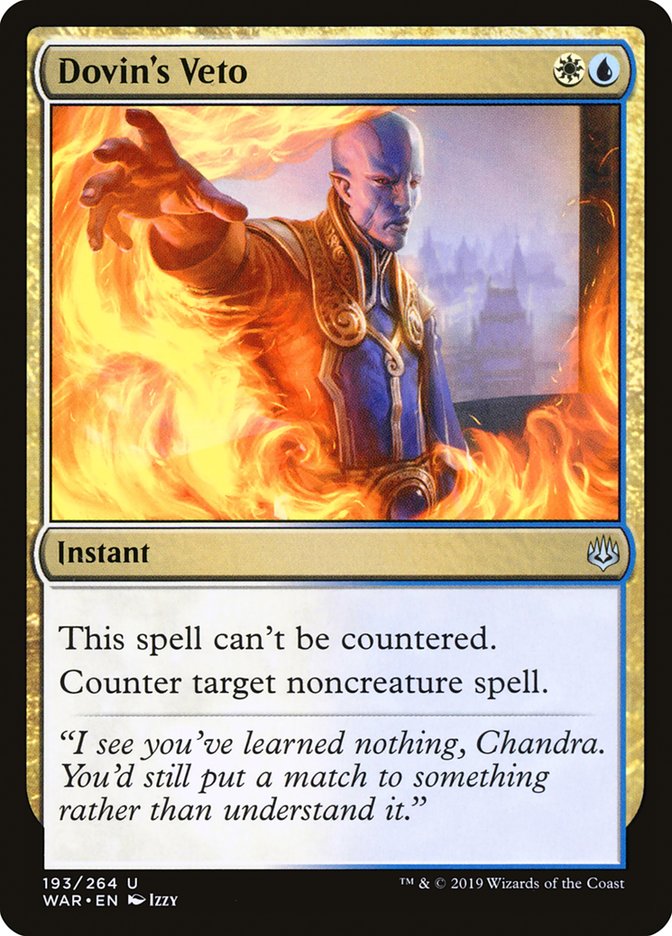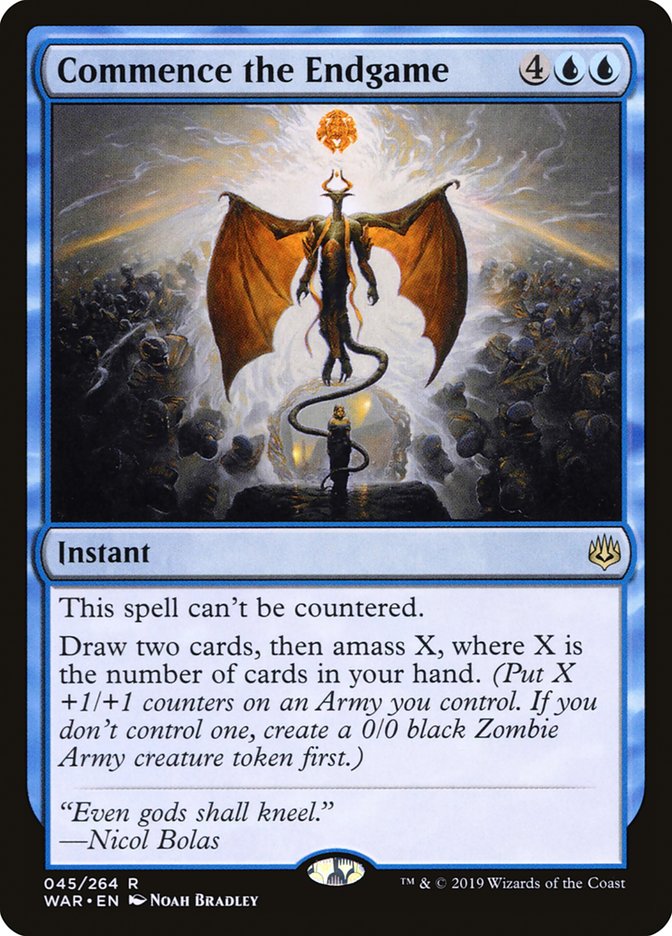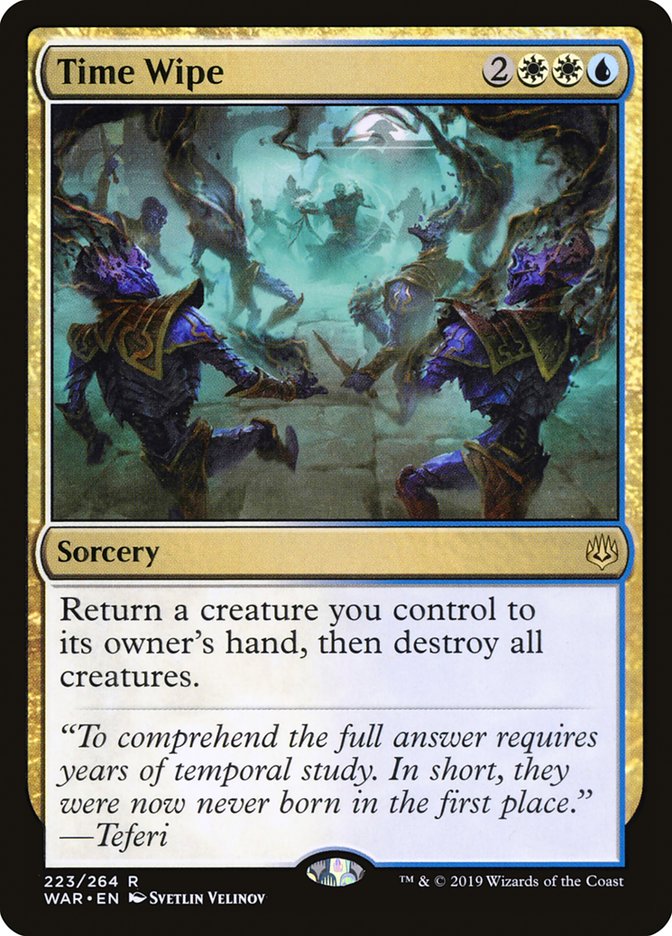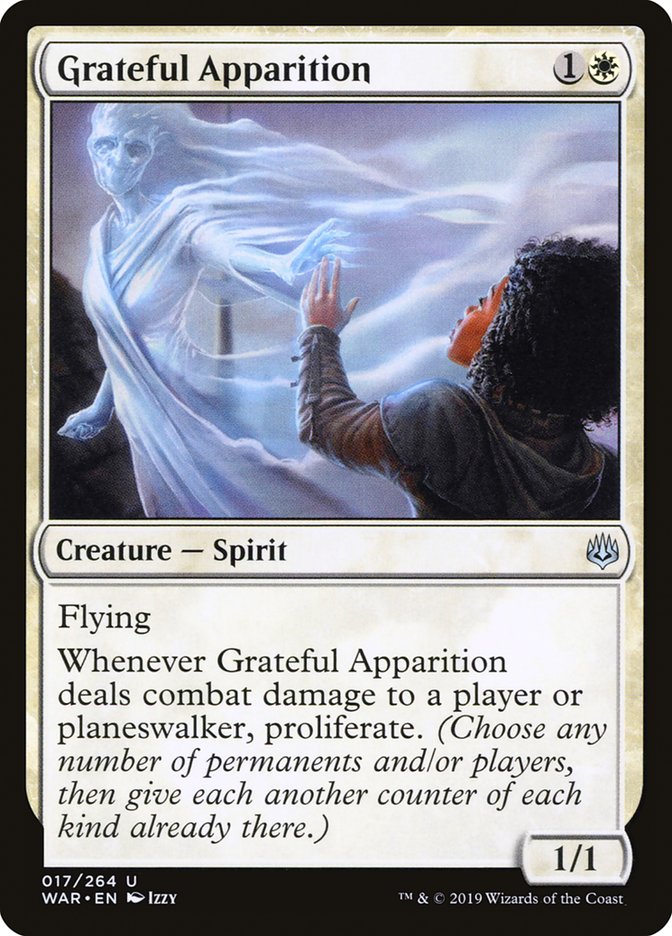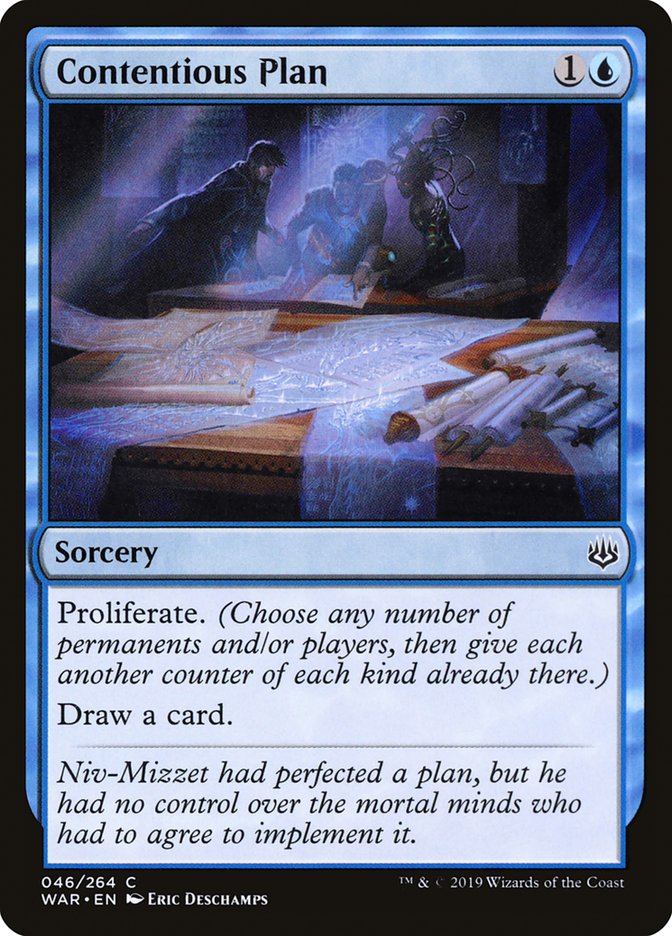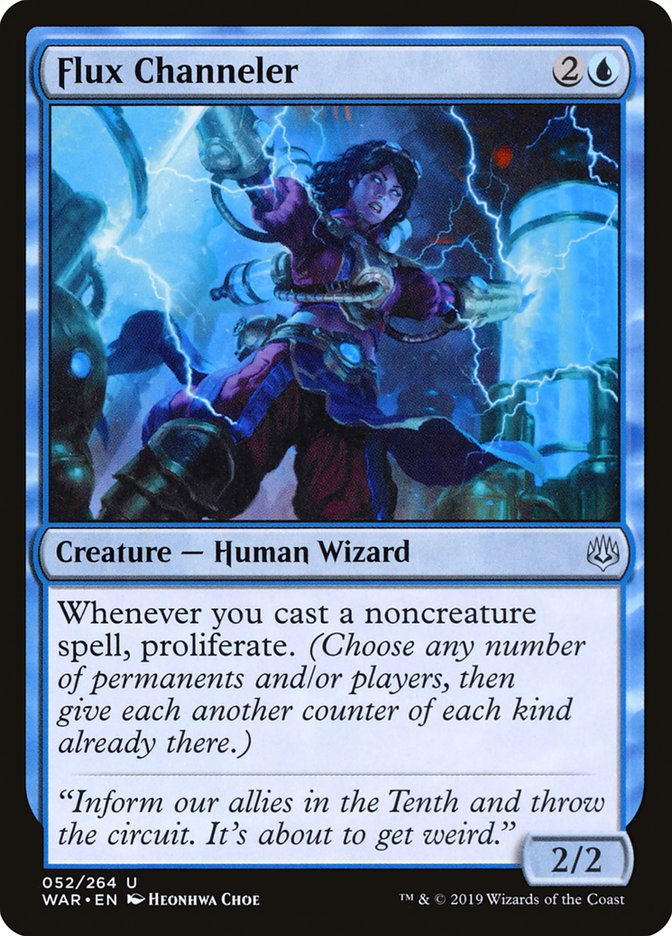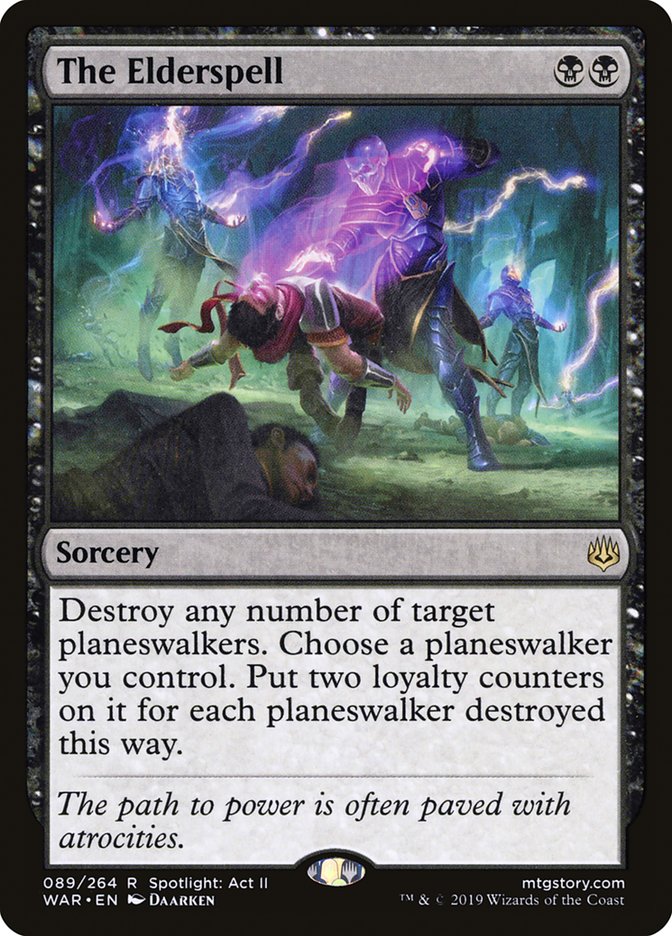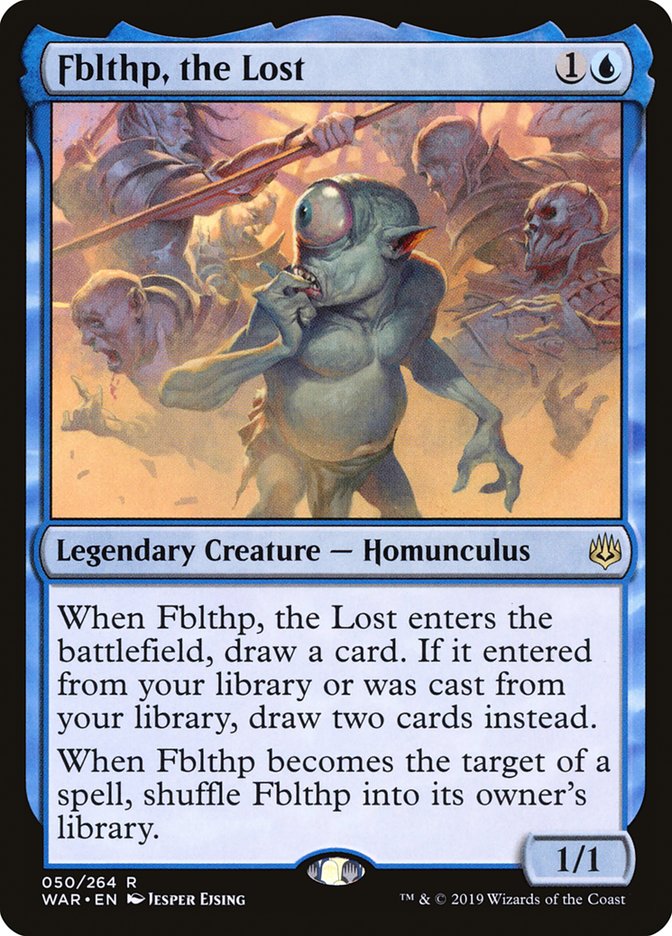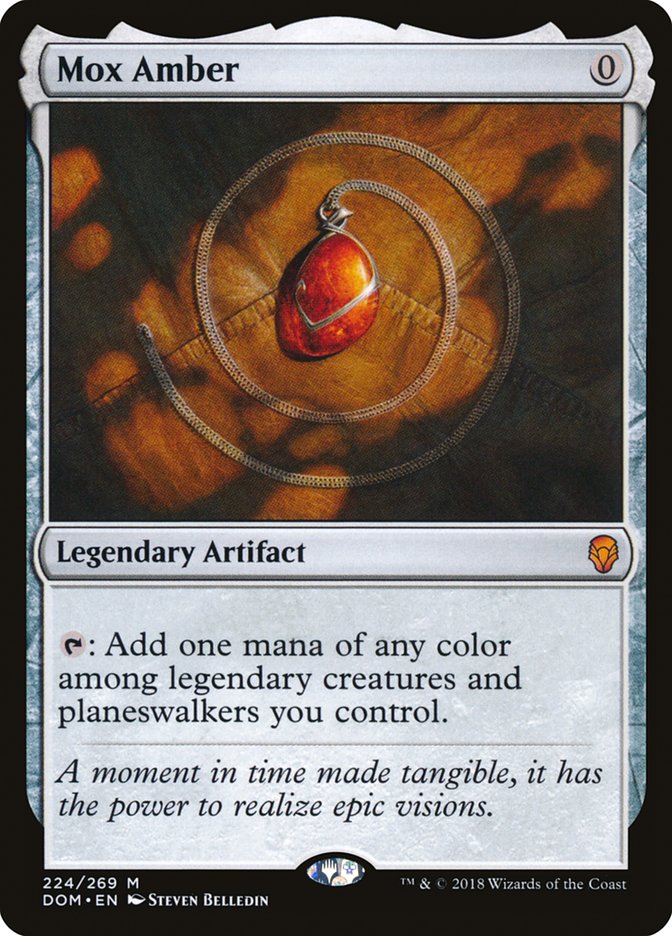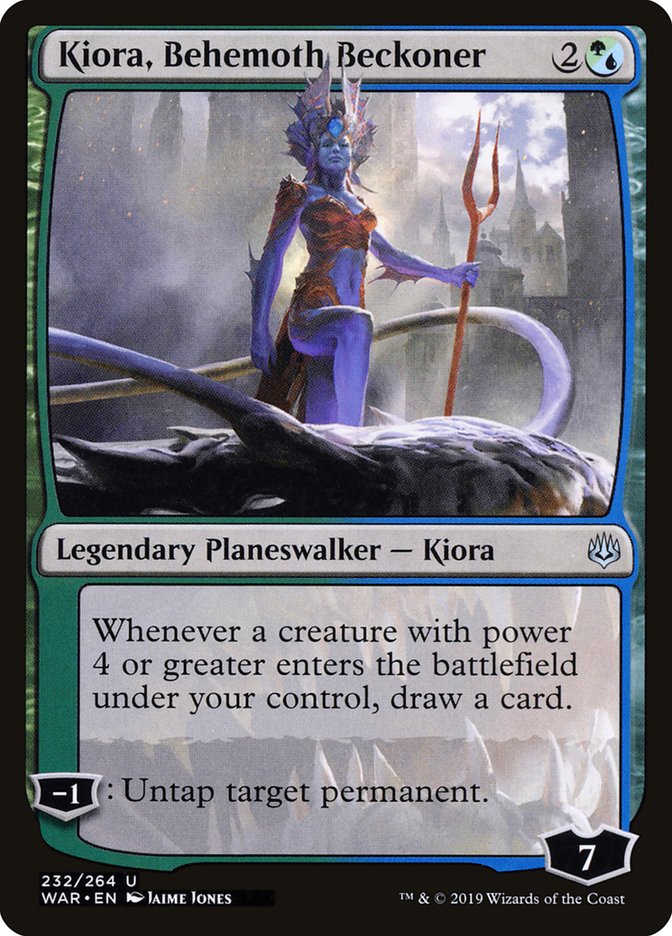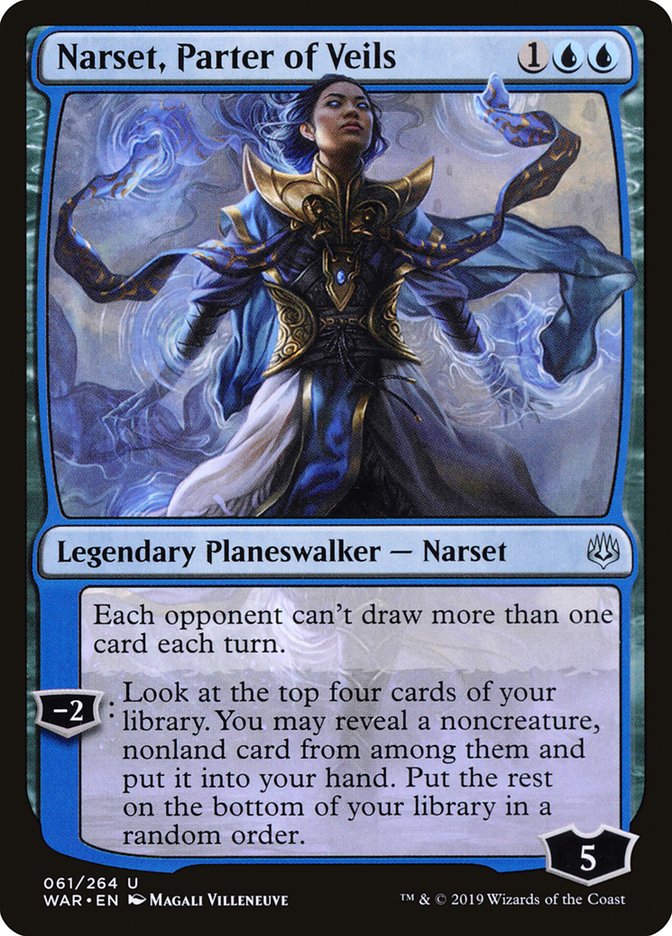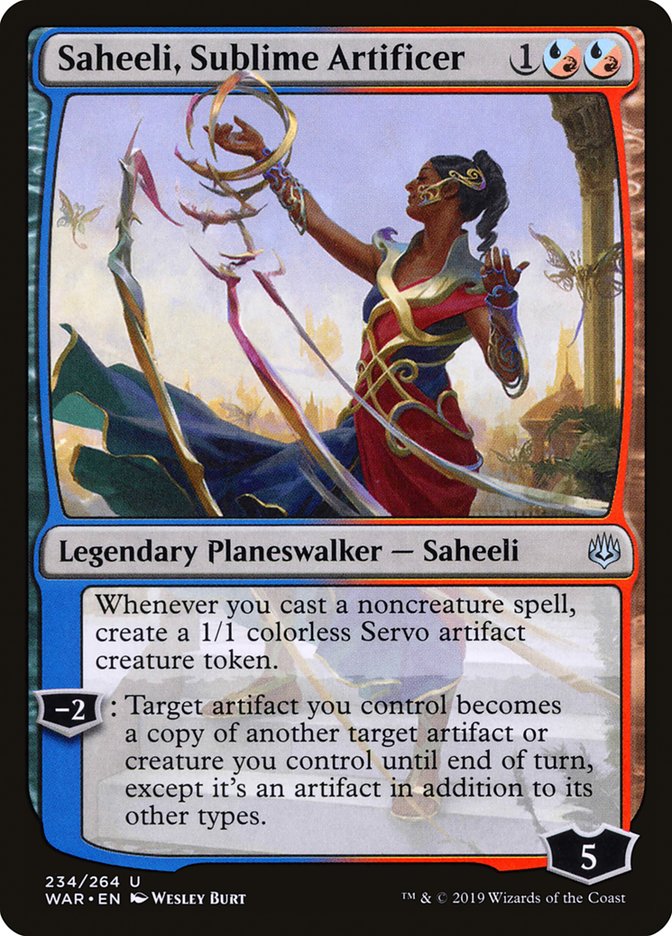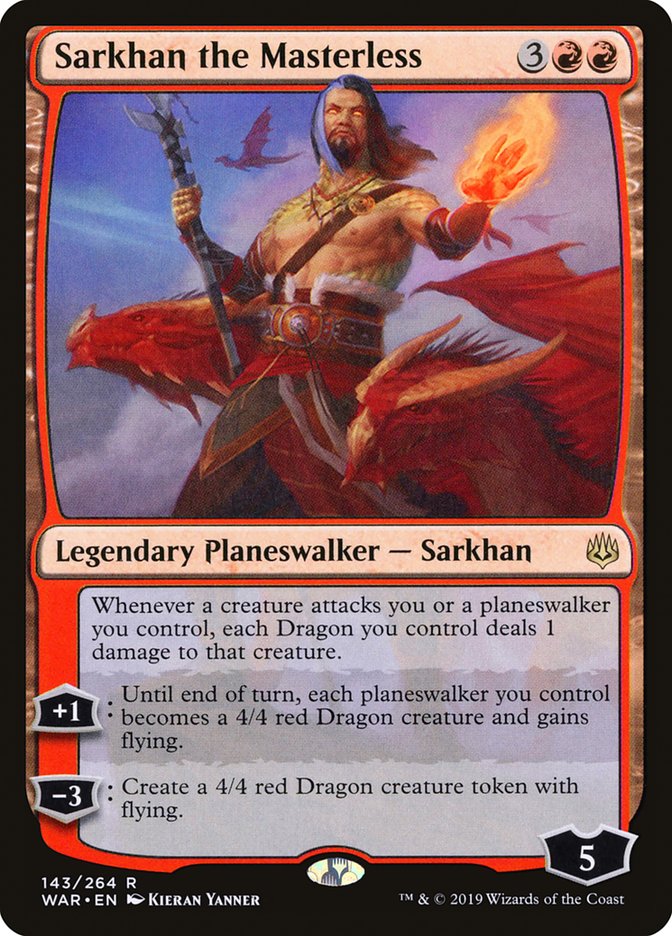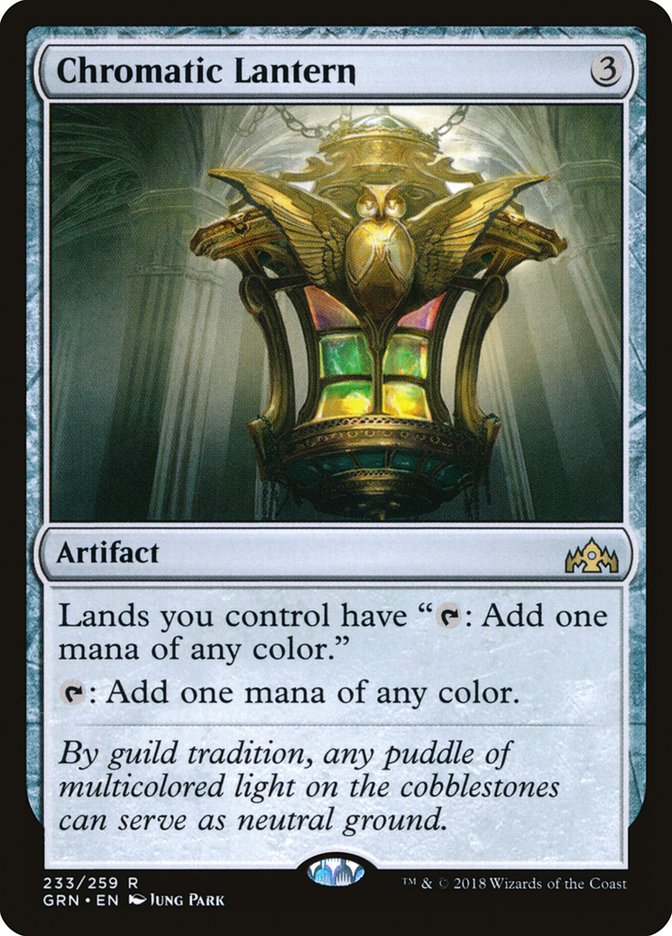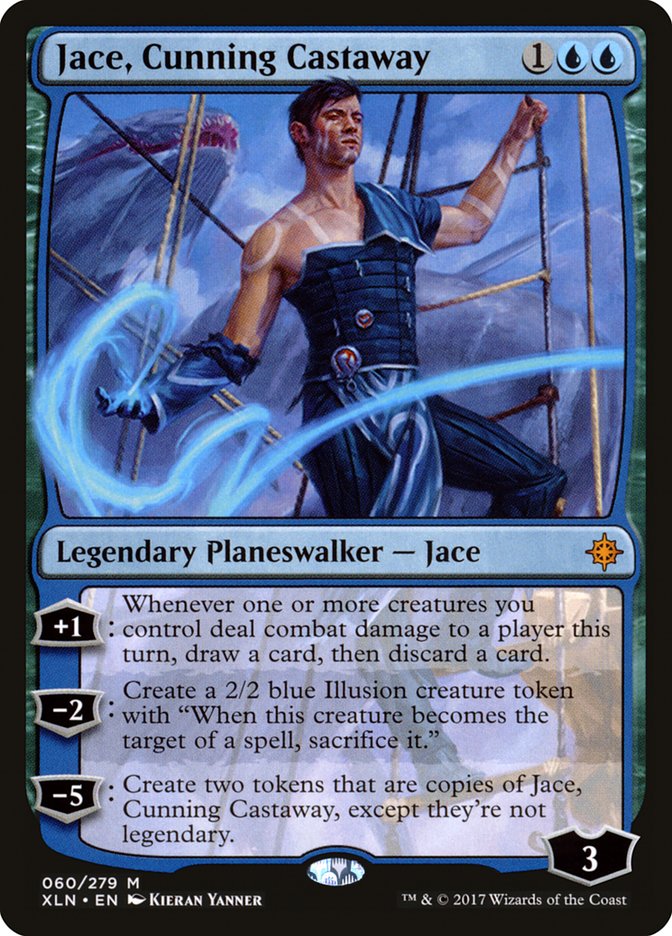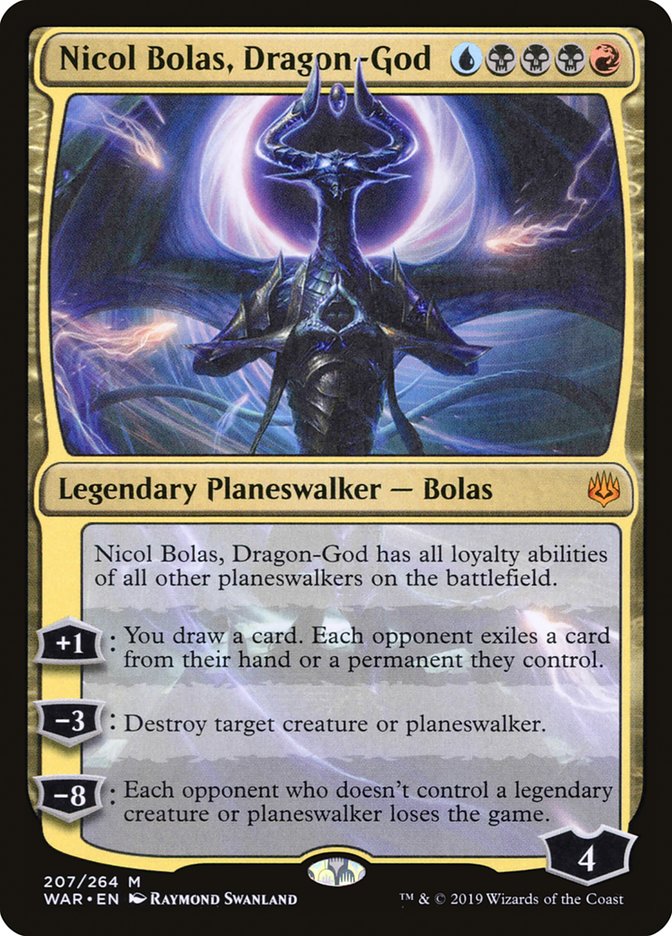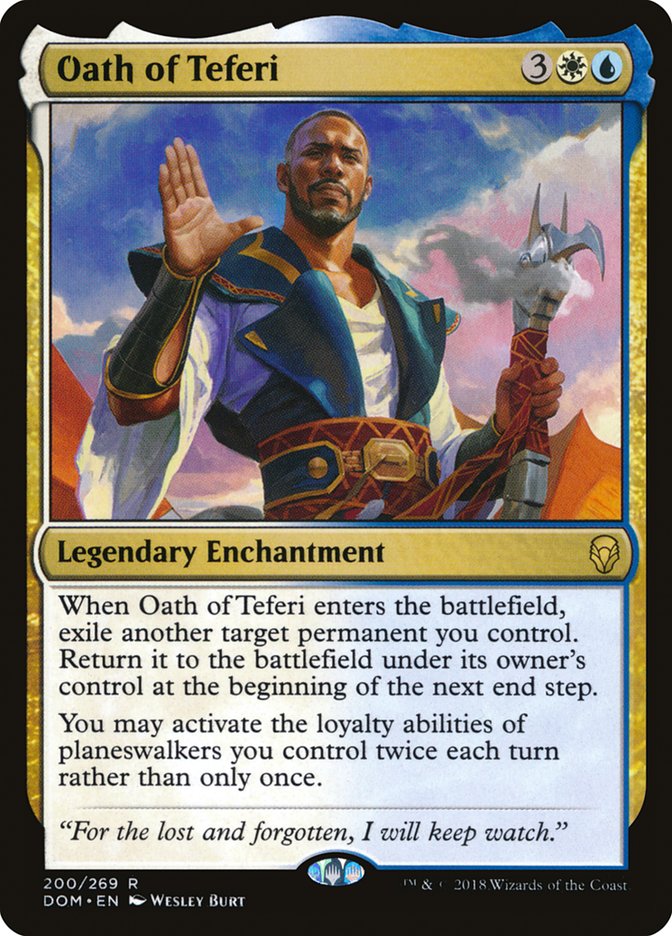With War of the Spark fully previewed and looking to redefine Standard in a big way, it’s time to get about the challenge of figuring out what new Standard looks like.
- What are the major archetypes?
- What are the defining threats?
- What are the primary forms of interaction?
- What kinds of manabases are possible?
- What kinds of homes are possible for the best rares and mythics?
Today, I’d like to focus on the latest Gideon, Gideon Blackblade.
While some of the planeswalkers in War of the Spark are more similar to enchantments than traditional planeswalkers, Gideon Blackblade is actually more like a creature. His passive is just so much of what the card is about, making him a 4/4 for three that can’t block and invulnerable to damage as an attacker.
Not surprisingly, Gideon Blackblade calls to mind his earlier version, Gideon of the Trials:
Gideon of the Trials was an all-star thanks to a pretty even balance between the 4/4 indestructible attack mode and the +1 lockdown defense mode. Gideon Blackblade is interestingly different in that the 4/4 mode is always on, even when using his other abilities, but unlike Gideon of the Trials, he has very little ability to actually defend himself beyond the one extra loyalty he starts with.
This +1 ability is much more difficult to make strong use of than the one on Gideon of the Trials; however, it brings with it the subtle upside that you can combine it with the 4/4 mode that’s always on. To this end, if you can reliably make good use of it, you can actually generate more advantage than Gideon of the Trials did when it was in 4/4 mode.
Vigilance is ostensibly a way to defend yourself, but that creature could already block, so it’s really just a way to attack more. The lifelink ability is the primary way to reliably gain an advantage in general. Finally, the indestructible option can also afford more options for pressing an attack, but can also be combined with sweepers for making some very exciting plays where you’re up a card, while also attacking with two creatures into an empty battlefield.
Gideon Blackblade’s ultimate is among the least game-winning Magic has ever seen. That said, it is a deceptively impressive option. With four starting loyalty and a +1 on the way in, if Gideon lives even a single turn beyond his first attack, you’ve got an extra option, and it’s a very useful, flexible one. You’re not necessarily going to be looking to sacrifice Gideon for this effect immediately, but the option has value, and the turn after, you can now hit your opponent’s best card without missing a beat with the whole attacking-for-four plan.
While the ultimate isn’t the biggest part of the card, it’s also pretty easy to use. Really, it’s the +1 that asks the most of us. The easiest way to give Gideon the support he needs is with two-drops. A two into a three is a smooth curve, but having a two-drop on the table means you can get some value from the +1 immediately (maybe lifelink on your Adanto Vanguard, just giving you a free three extra points of life, or whatever). It also means you can get value on Turn 4 without needing a haste creature.
Knight of Malice is an interesting two-drop to lead into Gideon with. Gideon gives you the white permanent needed to get Knight of Malice up to a 3/2. Knight of Malice is also a really great defender thanks to first strike, so giving him vigilance can be high-impact (thank you hexproof from white, instead of protection from white!).
Creatures (17)
Planeswalkers (6)
Lands (25)
Spells (12)

While Oath of Kaya might be better used by decks with more planeswalkers, it is actually kind of sweet here, on account of being a reliable way to keep both Knight of Malice and Knight of Grace powered up forever.
A sorcery-speed Lightning Helix for three isn’t embarrassing, since Oath of Kaya, unlike most of these types, can actually go upstairs. Even in decks that don’t place such a premium on white and black permanents, Oath of Kaya doesn’t have to try very hard to really pay you off. I mean, if you get a single trigger off it, you’re generally well ahead on your investment.
Besides, frequently, it’s going to take multiple attacks to take down a planeswalker like Gideon Blackblade or Sorin, Vengeful Bloodlord. Now, not only are you saving six to eight damage that could have gone to you, you’re also draining your opponent for four in the process. When you combine this with how much damage Gideon was already dealing, or how much life Sorin was already gaining you, you’re looking at some absolutely incredible life point swings that can truly dominate most races.
Sorin pairs excellently with Gideon Blackblade. First, Gideon is a high-power, reliable attacker for capitalizing on Sorin’s granted lifelink. Second, Sorin’s –X ability does a mean Ajani, Adversary of Tyrants impression, bringing back those two-drops that work so well with Gideon.
Gideon’s Triumph may look like a control card, but remember, it can be used on blockers, too. It works particularly well in racing situations (which are more likely to involve multiple attackers on both sides), as well as against hasty threats, particularly since Gideon Blackblade is durable enough that it’ll generally take two attackers to take him down. Gideon’s Triumph actually lets you turn the downside of Gideon being unable to defend himself into upside (your opponent being able to, and needing to, attack with multiple creatures).
Gideon, Sorin, and Oath of Kaya all add quality lifegain to Orzhov, and it already had access to a fair bit. My mind quickly goes to Lich’s Mastery, and seeing where things are there. There’s a lot of steep competition among cards that cost five or more, but Lich’s Mastery does have a pretty high ceiling if we can pull it off.
Creatures (12)
Planeswalkers (7)
Lands (25)
Spells (16)

This is a “fair” take on Lich’s Mastery, looking to use basically all cards that are good in their own right but happen to gain a little bit of life. Together, they turn Lich’s Mastery into a powerful end-game for winning attrition wars and races.
Ajani’s Pridemate is basically the only card here, besides Lich’s Mastery, that people don’t just use randomly. Of course, with so much lifegain, the card does a pretty solid Fleecemane Lion impression. It provides early pressure or blocking, as needed, while turning into a formidable threat in the mid-game.
Two-drops work so well with Gideon (and Sorin), I sort of lean towards experimenting with another one to go alongside, rather than just more Moment of Cravings. That said, we could also consider Tithe Taker, Orzhov Enforcer, or Knight of Malice.
Diamond Mare isn’t necessarily out of the question, but it really fails the “good on their own” test. It’s not like Lich’s Mastery is short of lifegain support in this list, so playing cards that are only good when you have it gives pretty marginal returns.
Resplendent Angel is pretty attractive the turn before dropping a Sorin (working well whether they kill it or not); however, between Oath of Kaya, Ral’s Insight, Deafening Clarion, and Lightning Strike, this looks to be a really hostile format for three-toughness creatures that cost more than two.
Gideon giving your Ajani’s Pridemate indestructible is especially exciting when followed by a Kaya’s Wrath, allowing you to attack for a lot against a defenseless opponent.
There are some other attractive card advantage engines that work well with so much lifegain, but Gideon and Sorin do sort of encourage us to be more aggressive. That said, they’ll probably be important sideboard tools, if nothing else.
Speaking of exotic engines, Feather, the Redeemed is one of the coolest new advantage engines to come out of War of the Spark. While Feather has a restrictive casting cost, that’s no real drawback in a Boros deck. A 3/4 flier for three is already very attractive, and Feather is so much more.
Instead of dealing damage to you, like former all-time great Serendib Efreet, Feather has a built-in card advantage engine that can quickly dominate games where it lives. The ability to buyback sorceries and instants you cast on it or any of your other creatures can be turned into an extra card a turn, or even two, with the right instants, since the ability works on both players’ turns. (!)
Creatures (17)
- 4 Adanto Vanguard
- 2 Lyra Dawnbringer
- 3 Aurelia, Exemplar of Justice
- 4 Tenth District Legionnaire
- 4 Feather, the Redeemed
Planeswalkers (3)
Lands (24)
Spells (16)

This list is sort of a Boros Angels deck, but with an eclectic mix of sorceries and instants aiming to really capitalize on Feather.
Defiant Strike means Feather is dealing four damage per turn, and for just two mana a turn-cycle, you’re drawing two extra cards each go-round. It can also add some surprise punch to combat involving Adanto Vanguard, Aurelia, or Lyra Dawnbringer; not to mention being one of the most efficient ways to trigger Tenth District Legionnaire.
With the right support, Tenth District Legionnaire is basically the best parts of both halves of Zhur-Taa Goblin, and more. You get a 2/2 haste (at least) on the way in, and then at a moment’s notice, it turns into a 3/3 and even gives you a little extra draw smoothing for your troubles.
Reckless Rage is another extremely attractive enabler for Tenth District Legionnaire, who conveniently gains the +1/+1 counter just in time to live through the two damage. Turning drawbacks into advantages is obviously super-sweet, and if you get Reckless Rage going with Feather, you can soft-lockout anyone overly reliant on creatures. All you have to do is protect Feather.
While Sheltering Light isn’t nearly as potent to loop as Defiant Strike and Reckless Rage, it still gives you a lot of dig to find more powerful things to do. The real benefit from Sheltering Light is how reliably and efficiently it can protect Feather (or Aurelia, or Lyra…). If you cast Feather on Turn 4 and your opponent casts a Ravenous Chupacabra, Sheltering Light not only counters the most important part of their turn, it also returns to your hand, threatening to do it again if they try any funny business in the future.
There are so many attractive ways to kill creatures for three or more mana, a lot of people aren’t going to have many ways to play two kill spells that can actually kill Feather in the same turn.
Even Lava Coil can be awkward against Feather. If you have two Lava Coils, you still can’t break up the Feather / Sheltering Light combo due to Lava Coil being sorcery-speed.
White two-cost removal frequently needs the creature to be attacking, so if you’re looping something like Defiant Strike or Reckless Rage, there will be some battlefields where Feather might as well stay home and stay safe while your advantage grows.
Like Kaya’s Wrath, Deafening Clarion is a great pairing with Gideon (whether maindeck or sideboard). The lifelink is also well-used by Gideon and this mix of Boros creatures in general.
Once we’re going to the trouble of playing so many must-kill threats, Shalai starts to look kind of attractive, even without green mana. Should we be making room? She’s even an Angel for Lyra Dawnbringer!
Lyra is a great card in general, and a wonderful threat to protect with Sheltering Light. Feather and Aurelia also being Angels means we’re going to get more than usual from her. Still, I also want to try God-Eternal Oketra. Oketra isn’t as naturally synergistic with the deck, but I could imagine its power level being high enough and the angle of attack it offers being appreciated enough to be worth it.
God-Eternal Oketra’s baseline is 6/6 for five (though generally, a 3/6 double strike creature is better, since we get extra value from stuff like Defiant Strike). That it gives you a 4/4 vigilance creature for free after every other creature you cast is just absurd. Like, if you play a single other creature, you’re already getting a virtual 10/10 worth of stats, and any more quickly and completely dominates most games.
This ability makes God-Eternal Oketra a must-kill threat, which in turn makes the death/exile ability very strong. Not only does killing Oketra just delay the inevitable, you can’t even exile it to get out of it.
This isn’t to suggest that there aren’t creative ways to get around Oketra’s immortality, but it’s not easy.
While Oketra is something I’m thinking about in any white creature deck, the home that really jumps out at me is in some kind of a Llanowar Elves deck. As good as Oketra is as a five-drop, it can be really out of this world if cast with one or two mana open so you can follow it up with another creature, immediately netting you a 4/4. Llanowar Elves both gets you the mana advantage you need to maximize Oketra and serves as an amazing follow-up in the same turn.
Creatures (25)
- 4 Llanowar Elves
- 4 Wildgrowth Walker
- 4 Merfolk Branchwalker
- 4 Jadelight Ranger
- 2 Shalai, Voice of Plenty
- 4 Incubation Druid
- 1 God-Eternal Rhonas
- 2 God-Eternal Oketra
Planeswalkers (6)
Lands (22)
Spells (7)

God-Eternal Oketra is more straightforwardly attractive, but there’s a lot to like about God-Eternal Rhonas as well.
The ability to greatly increase our damage output out of nowhere is a great added dimension, and the card will generally play a little faster out the gate than God-Eternal Oketra.
Both God-Eternals synergize nicely with explore, letting you skip some of the waiting period before their return. That said, I could also imagine going a slightly heftier route, trading in some of the explore for heavier hitters.
Growth-Chamber Guardian is a great way to ensure the turns after Oketra are profitable, and it hits hard enough that you’re likely to get a lot of bang for your buck out of Rhonas. Maybe we could try something like:
Creatures (24)
- 4 Llanowar Elves
- 4 Adanto Vanguard
- 4 Jadelight Ranger
- 2 Shalai, Voice of Plenty
- 2 Kraul Harpooner
- 4 Growth-Chamber Guardian
- 2 God-Eternal Rhonas
- 2 God-Eternal Oketra
Planeswalkers (5)
Lands (22)
Spells (8)

While we’re making our way around various white aggro decks, it should be noted that we can just slot Gideon into popular Mono-White or Azorius Aggro decks. We just need to be mindful that we’re not getting carried away with three-drops.
Creatures (26)
- 4 Adanto Vanguard
- 4 Skymarcher Aspirant
- 4 Benalish Marshal
- 4 Dauntless Bodyguard
- 2 Healer's Hawk
- 4 Venerated Loxodon
- 4 Tithe Taker
Planeswalkers (3)
Lands (20)
Spells (11)

In such a deck, Gideon makes an excellent threat for advancing your battlefield while reducing your exposure to sweepers.
Obviously, in a deck like this, Dovin’s Veto is basically a strict upgrade to Negate. The uncounterable text is especially good for ensuring that your counter of their Kaya’s Wrath actually sticks. If Azorius Control decks have enough reason to play Field of Ruin or Arch of Orazca, they could conceivably just want to stick with Negate.
Creatures (4)
Planeswalkers (7)
Lands (25)
Spells (24)

I don’t know if we can really get away with playing three Gideons in a deck without cheap attackers, but upgrading our Gideon’s Triumphs is at least something to consider. At least the lifelink mode pairs well with Commence the Endgame.
Commence the Endgame is sort of a big Torrential Gearhulk that always chooses a draw-two. It’s definitely less flexible, but sometimes that extra size will pay off, and besides, being such a great hit for Augur of Bolas is nothing to sneeze at.
Time Wipe is a lot less sexy than Kaya’s Wrath, but at least it’s easy to cast and combos with Augur of Bolas. Besides, we’ve got to play some kind of a sweeper, and we might be less interested in Settle the Wreckage with Gideon’s Triumph already doing so much of that work.
One final approach to Gideon Blackblade I’d like to examine is his use alongside lots of other planeswalkers, in so-called “SuperFriends” decks.
Creatures (6)
Planeswalkers (15)
- 2 Karn, Scion of Urza
- 4 Teferi, Hero of Dominaria
- 1 Dovin, Grand Arbiter
- 1 Kaya, Orzhov Usurper
- 1 Liliana, Dreadhorde General
- 1 Teferi, Time Raveler
- 1 Sorin, Vengeful Bloodlord
- 1 Saheeli, Sublime Artificer
- 1 Narset, Parter of Veils
- 2 Gideon Blackblade
Lands (26)
Spells (13)

This list is obviously trying out a lot of things, but the main thing is abusing proliferate with all the planeswalkers.
Grateful Apparition and Flux Channeler are obviously fragile, but it’s not unreasonable to think they may generate such a big advantage when they live to be worth the gamble.
This deck is great for ultimating planeswalkers left and right. Obviously, there are just so many, and proliferate speeds progress like crazy; however, The Elderspell is the real trump for going over the top quickly.
The Elderspell is obviously backbreaking against other planeswalker decks, but even against a normal deck that happens to put one on the battlefield, it kills it for a very low cost while adding valuable loyalty to one of yours. This might already be enough to ultimate your Teferi or Liliana ahead of schedule, but if you have another planeswalker on the battlefield, it’ll usually be pretty easy to get your main planeswalker’s loyalty high enough to go off right there.
Even against opponents without planeswalkers, you can use The Elderspell on multiple minor ‘walkers of your own. Teferi’s ultimate is so strong, it will frequently be worth cashing in three cards to pull it off.
Fblthp isn’t that big a deal, but it might be a nice minor option for an extra speed bump that can help defend key planeswalkers better than his tiny body might suggest. Besides, Mox Amber plus Fblthp is just clean living!
I could imagine going heavier on the Mox Ambers, with a plan of Turn 3 planeswalker plus Mox Amber into Turn 4 Teferi. Along these lines, Kiora, Behemoth Beckoner could be sweet, letting you untap a land immediately, meaning you can cast a two-cost card the same turn you cast her if you have Mox Amber.
She’s obviously a lot better with four-power creatures, but she starts with so much loyalty, she might actually pull her weight from the untap ability alone, depending on what you’re trying to do.
While we don’t actually need all one-ofs, playing such a big spread will help us test the fastest, and besides, there are at least some diminishing returns to these ‘walkers. Teferi, Time Raveler is pretty solid on his own, thanks to just bouncing a threat. Narset, Parter of Veils is a passable source of card advantage that can randomly be very disruptive.
Saheeli, Sublime Artificer is a solid enabler for the other ‘walkers that benefit from having extra creatures around, like Dovin, Gideon, Sorin, and Liliana. Besides, sometimes she turns your Mox Ambers into 1/1 fliers, and sometimes she turns a 1/1 flier into an extra mana for the turn when you’ve got Mox Amber.
Another possible way to go with SuperFriends is Mardu. The big gain here is Sarkhan the Masterless.
Sarkhan is incredible, functioning sort of like a Broodmate Dragon on his own (make a 4/4 flier and then turn into a 4/4 flier), but when he’s combined with other ‘walkers, you get a lot more than the sum of the parts. First of all, the Dragons protect any and all ‘walkers you might control. More importantly, however, Sarkhan’s +1 affects all your ‘walkers.
This is a lot more than just a way to make a four-point attack out of nowhere when you’ve got an extra ‘walker laying around (which can also still use its loyalty ability). This is a devastating endgame that can easily produce eight or twelve damage immediately in the air. This is especially deadly when combined with Oath of Kaya and Sorin, Vengeful Bloodlord for winning races like nobody’s business.
Creatures (8)
Planeswalkers (17)
- 2 Karn, Scion of Urza
- 1 Kaya, Orzhov Usurper
- 1 Liliana, Dreadhorde General
- 2 Sorin, Vengeful Bloodlord
- 2 Chandra, Fire Artisan
- 1 Saheeli, Sublime Artificer
- 4 Gideon Blackblade
- 4 Sarkhan the Masterless
Lands (26)
Spells (9)

Once we’re experimenting with such dedicated planeswalker decks, we might as well consider going the full monty.
Running Chromatic Lantern alongside Interplanar Beacon and Evolving Wilds could enable a five-color SuperFriends deck, especially if we stick to three primary colors, splashing the other two for ‘walkers only.
Creatures (4)
Planeswalkers (18)
- 4 Jace, Cunning Castaway
- 2 Karn, Scion of Urza
- 1 Dovin, Grand Arbiter
- 3 Ajani, the Greathearted
- 1 Teferi, Time Raveler
- 1 Saheeli, Sublime Artificer
- 4 Nicol Bolas, Dragon-God
- 1 Narset, Parter of Veils
- 1 Gideon Blackblade
Lands (26)
Spells (12)

This build is probably just too defenseless, but the combination of Jace, Cunning Castaway plus Nicol Bolas, Dragon-God plus Oath of Teferi is too sweet not to try.
With all three on the battlefield, Bolas can both +1 and use Jace’s ultimate in the same turn, giving you two more copies of Bolas. Repeat as much as you like, and you can exile all your opponent’s permanents and cards in hand while also drawing as many extra cards as you like.
Oath of Teferi is pretty sick in this deck anyway, making every planeswalker so much more explosive.
While it’s cute that Ignite the Beacon can find both Nicol Bolas, Dragon-God and Jace, Cunning Castaway, it’s yet another five-cost card, and glacially slow. If you were going to try to make it work, it’d be better in a deck with only a single copy of Jace that uses a very small amount of Ignite the Beacon as a backup plan for going over the top of opponents going long. Still, I doubt that’s better than just focusing on being a better The Elderspell deck and triggering Bolas’s or Teferi’s ultimate.
While many of the decks we talked about today look alien compared to what we’ve been playing, that’s kind of the point. War of the Spark is an uncommonly powerful set, but it’s also an uncommonly transformative set that looks like it was designed to completely revolutionize the face of Standard. A lot of sacrifices were made to make this all possible…
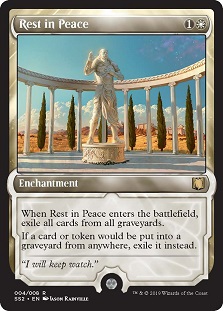
Make it worth it.


